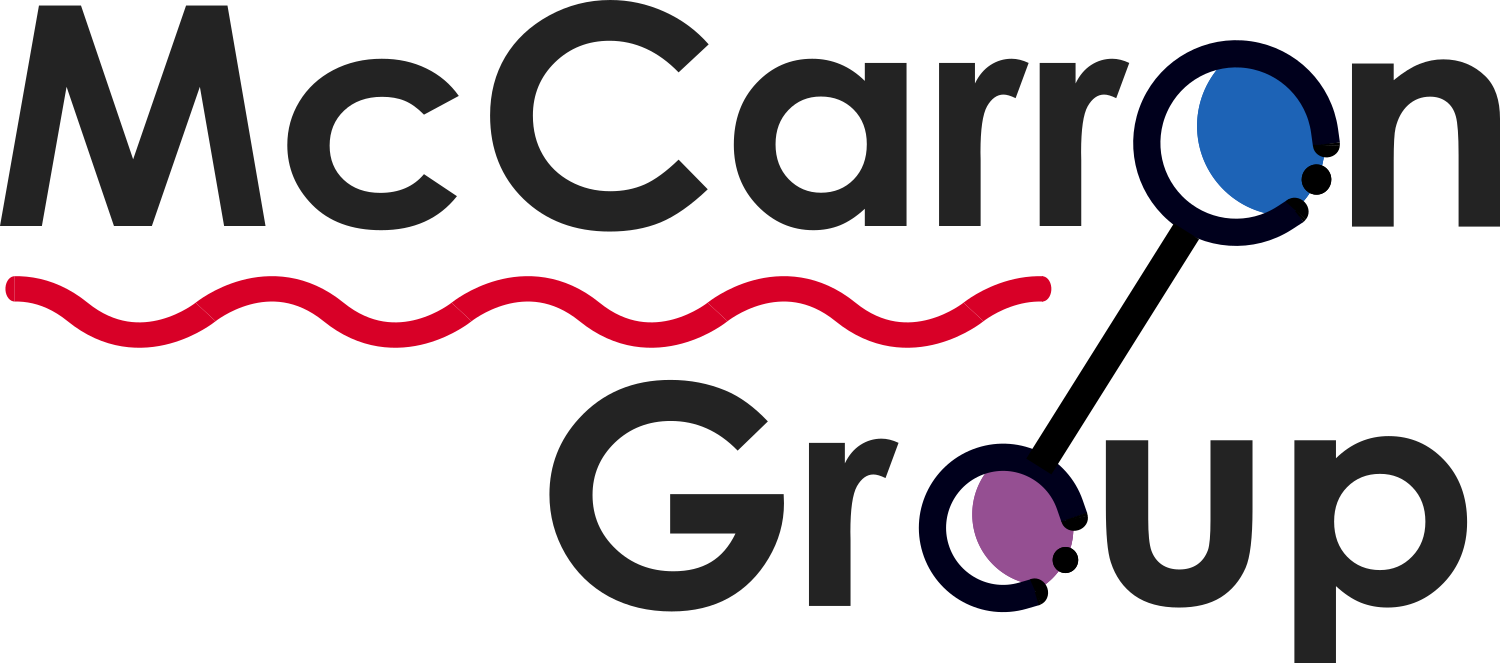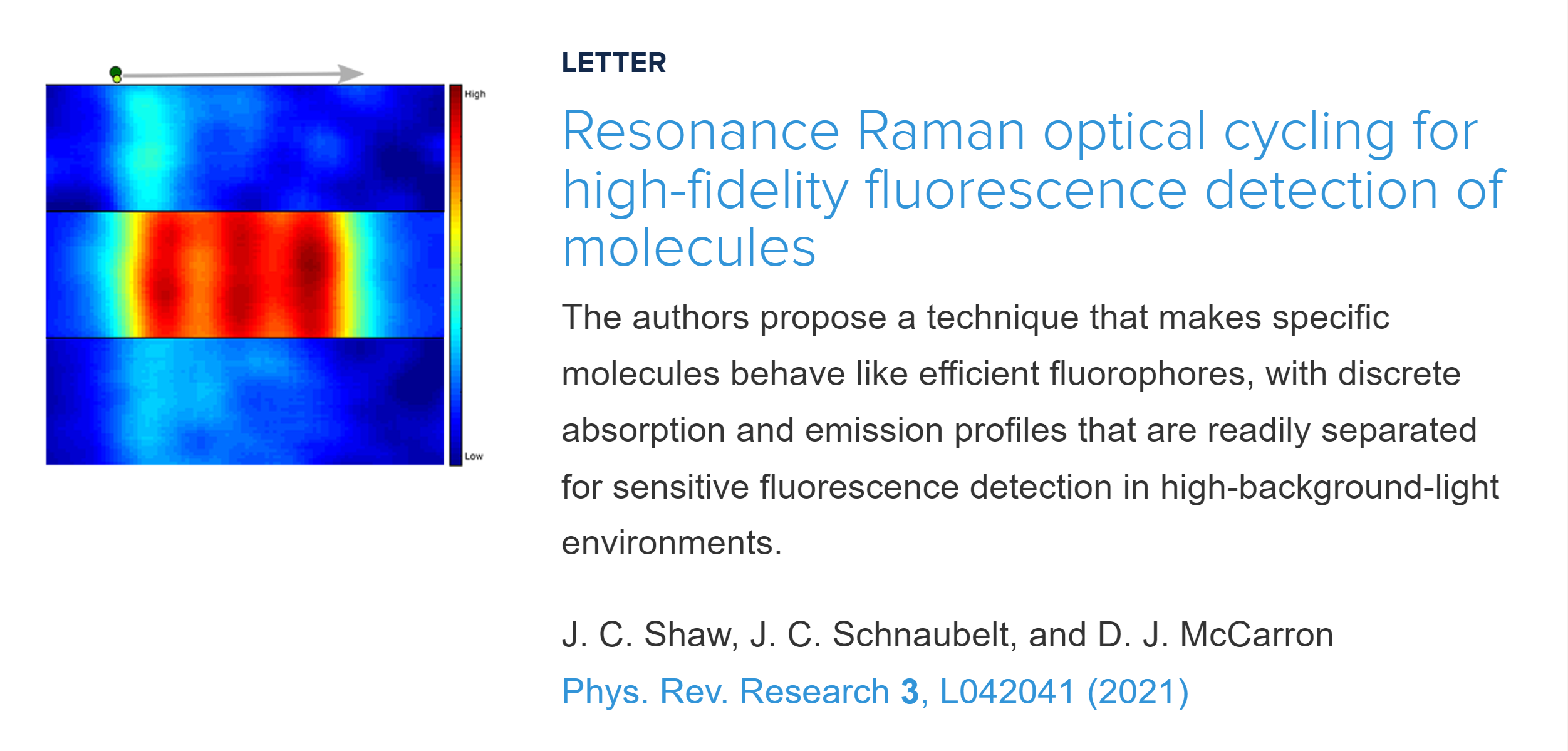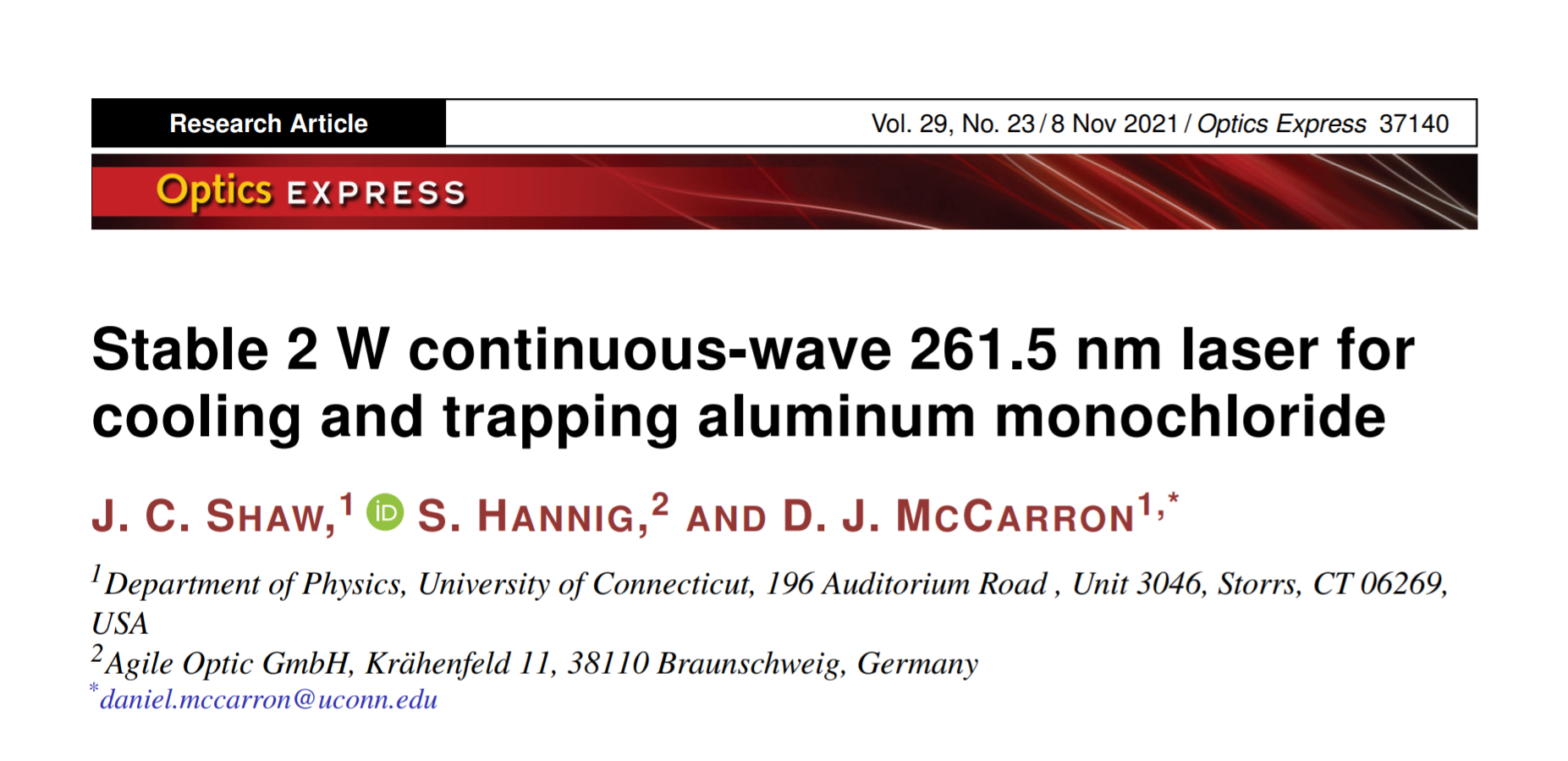News
December 2023
Our work probing and understading the AlCl A-state hyperfine structure for optical cycling has been published in Phys. Rev. A. This work was in collaboration with the Hemmerling group at UC Riverside and Brian Kendrick from LANL. We're very grateful for this collab!
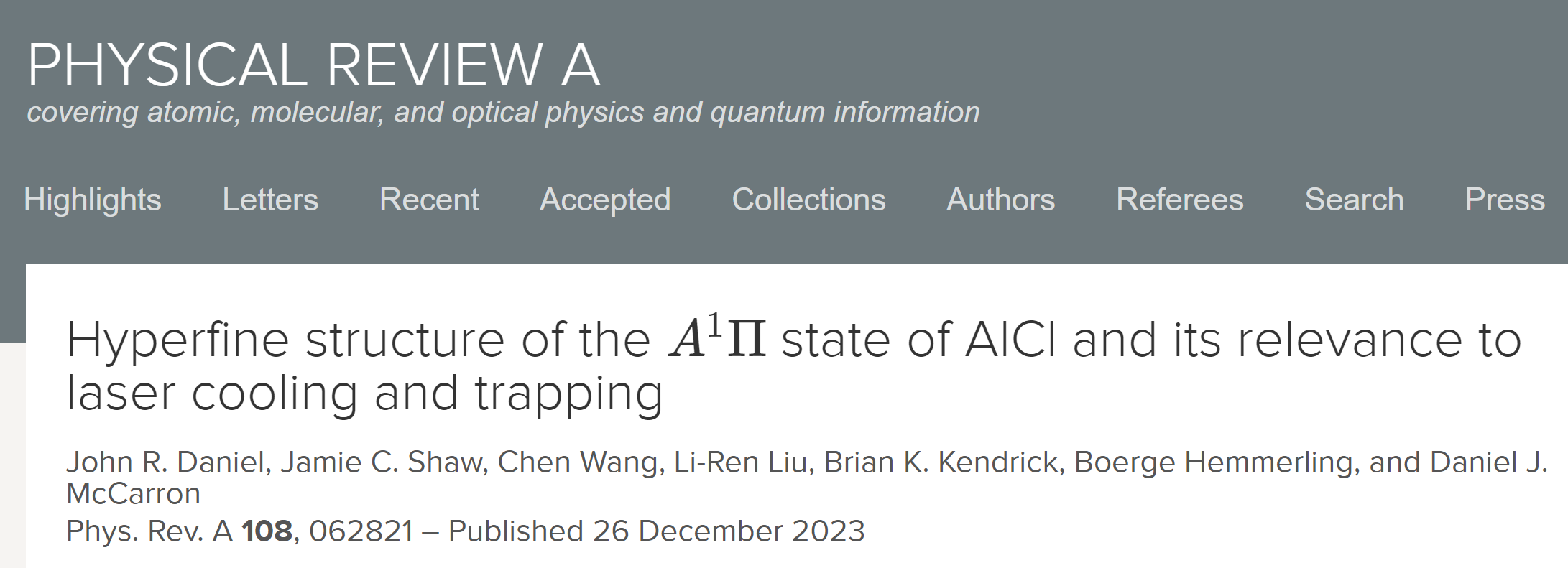
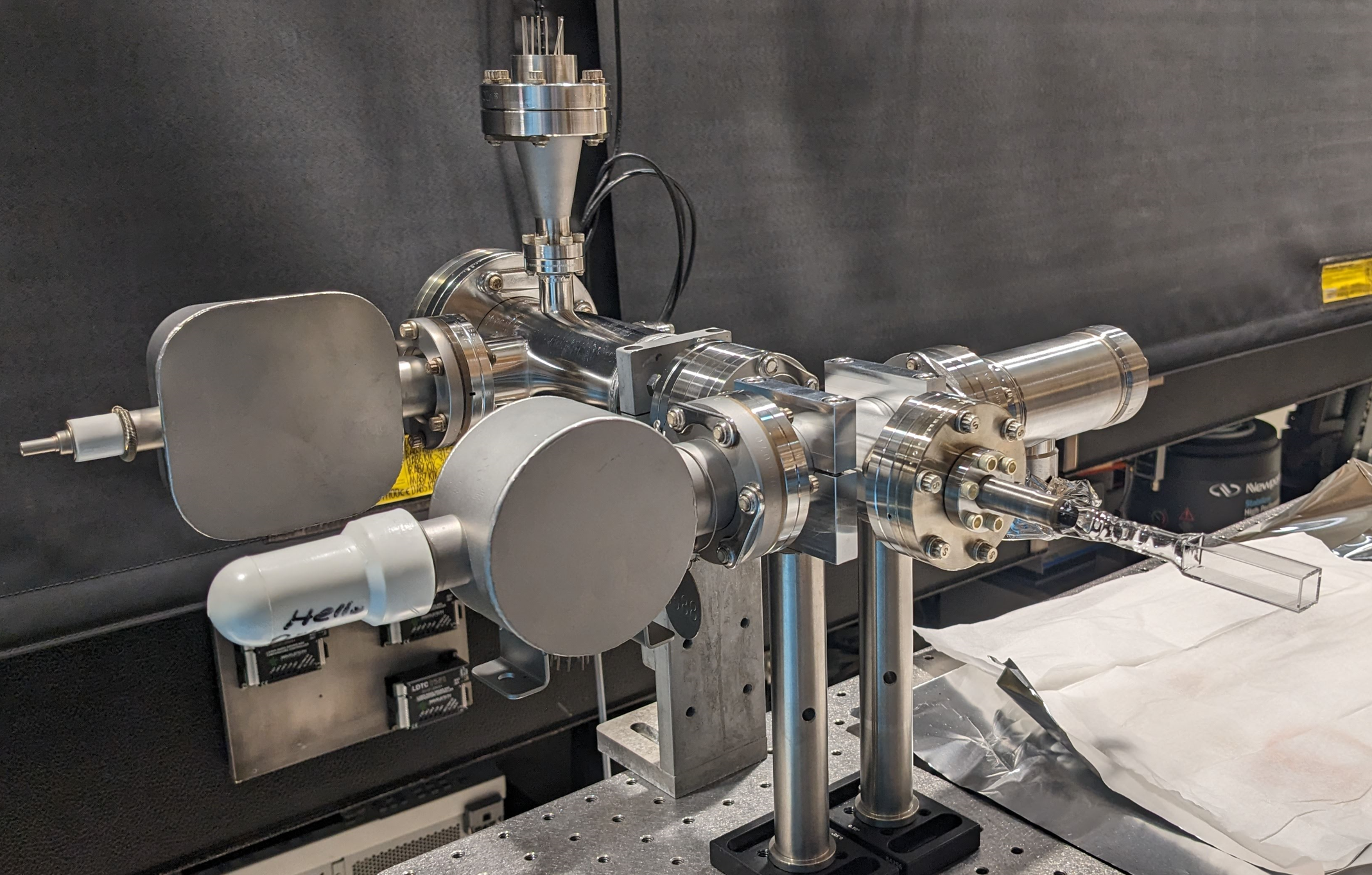
November 2023
Our portable outreach lithium apparatus is now assembled, leak-tested and currently being pumped-out/baked.
Congratulations to Devin, Guadalupe and Pranay whose hard work during the summer made this possible.
September 2023
Our AlCl MOT chamber is now assembled, blackend and leak tested. Next we plan to calibrate our fluorescence imaging system offline before installing this chamber onto the molecular beamline.
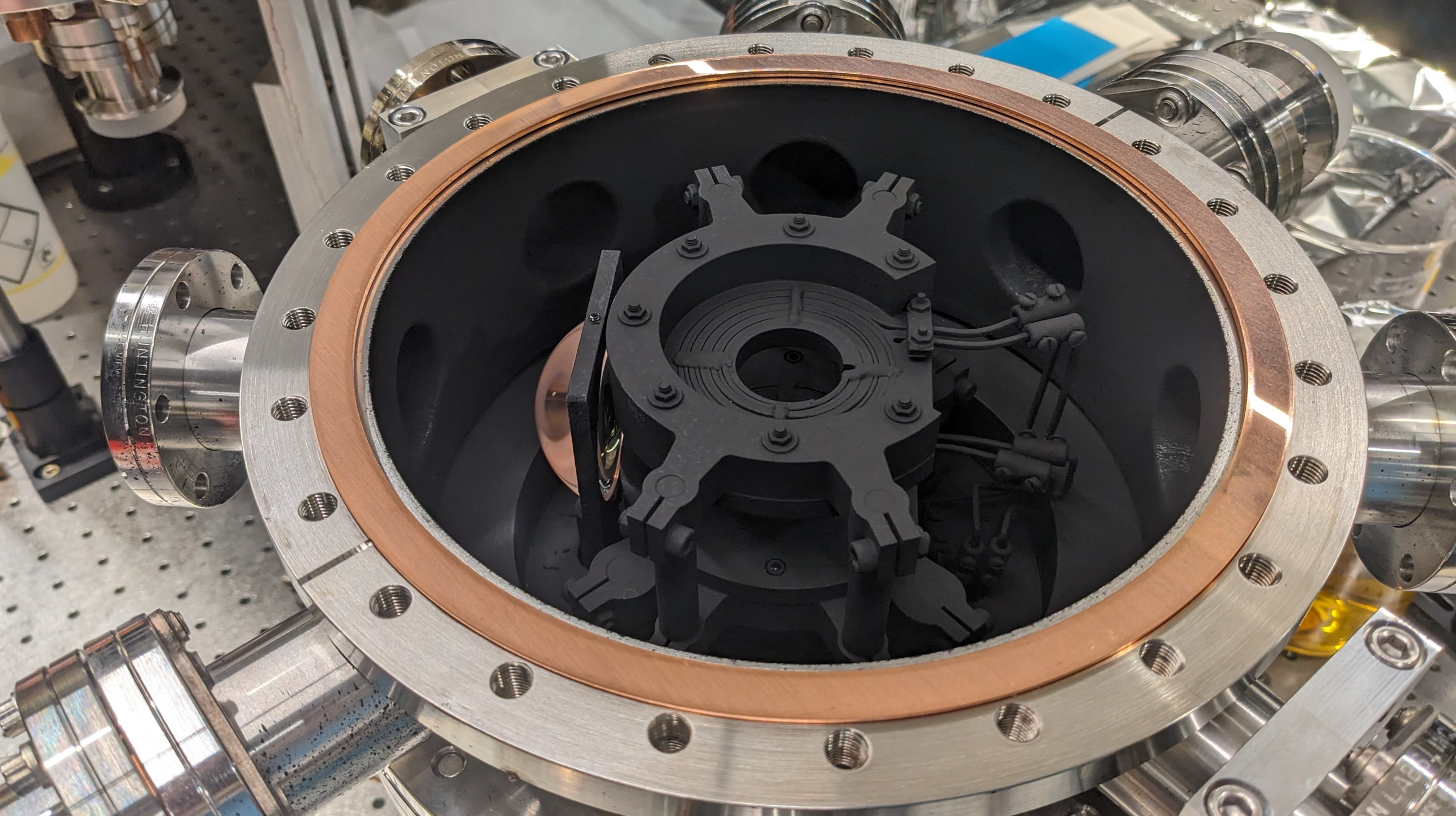
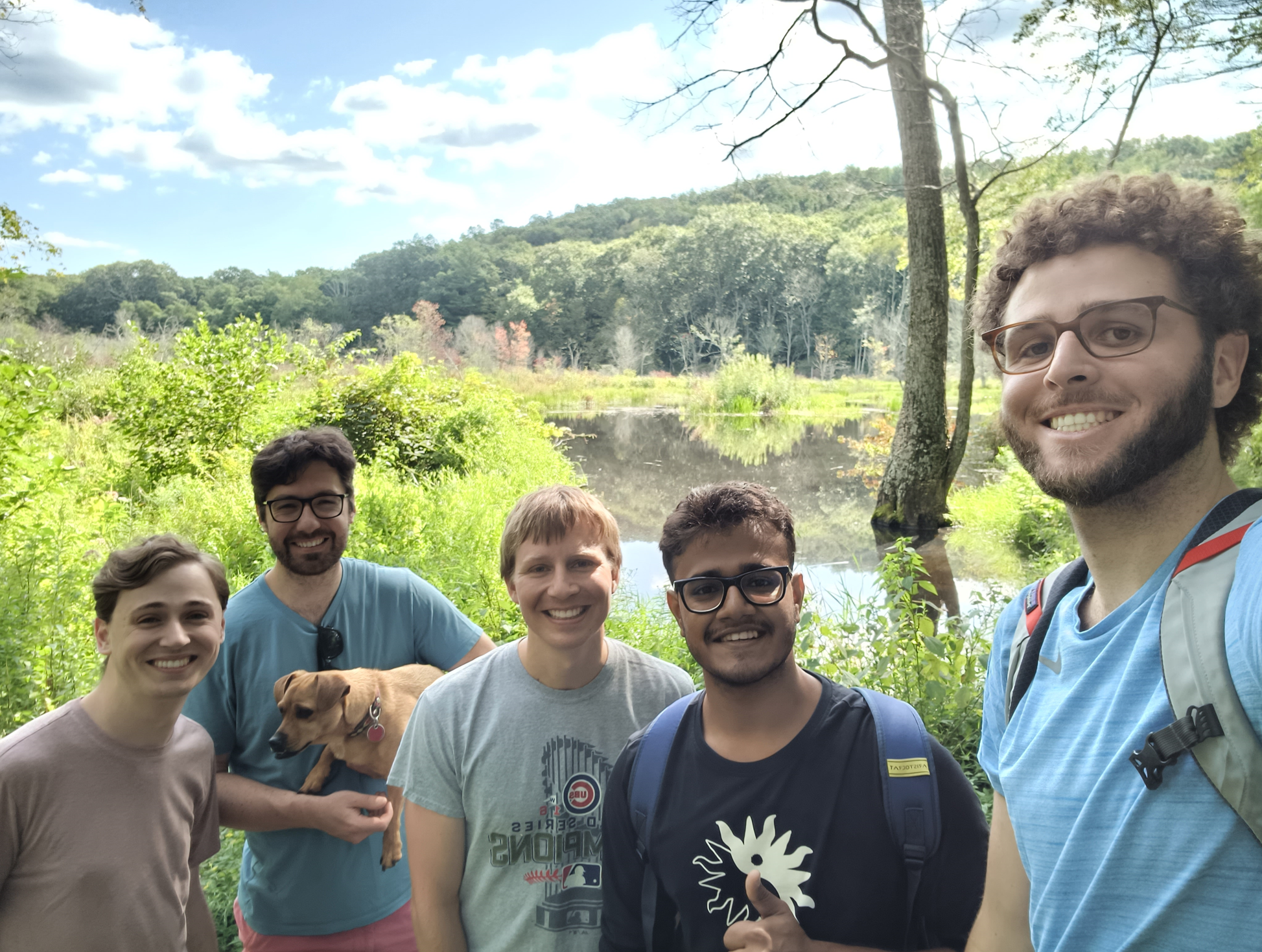
August 2023
Welcome to Alex and Aritra who join our group as new graduate students!
We marked the occassion with a hike to a beaver lodge close by to campus. Sadly no beavers were spotted, maybe next time…
July 2023
We welcome local high school students Devin, Guadalupe and Pranay into our lab this summer. Their goal is to build a portable vacuum system to laser-cool and trap lithium atoms and be used in our outreach efforts.
Pictured (L to R): Pranaya, Guadalupe and Dan with the UHV glass cell during assembly.
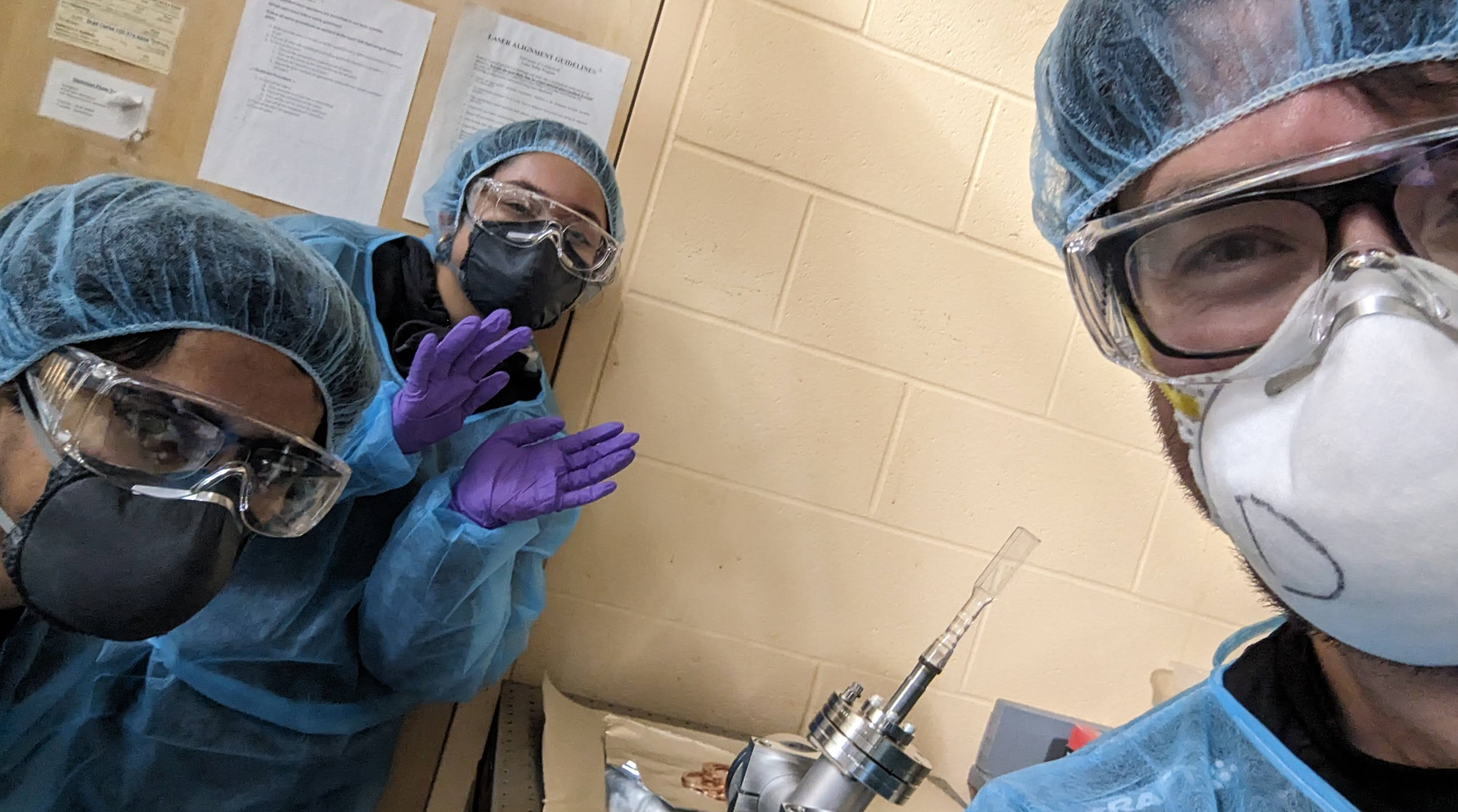
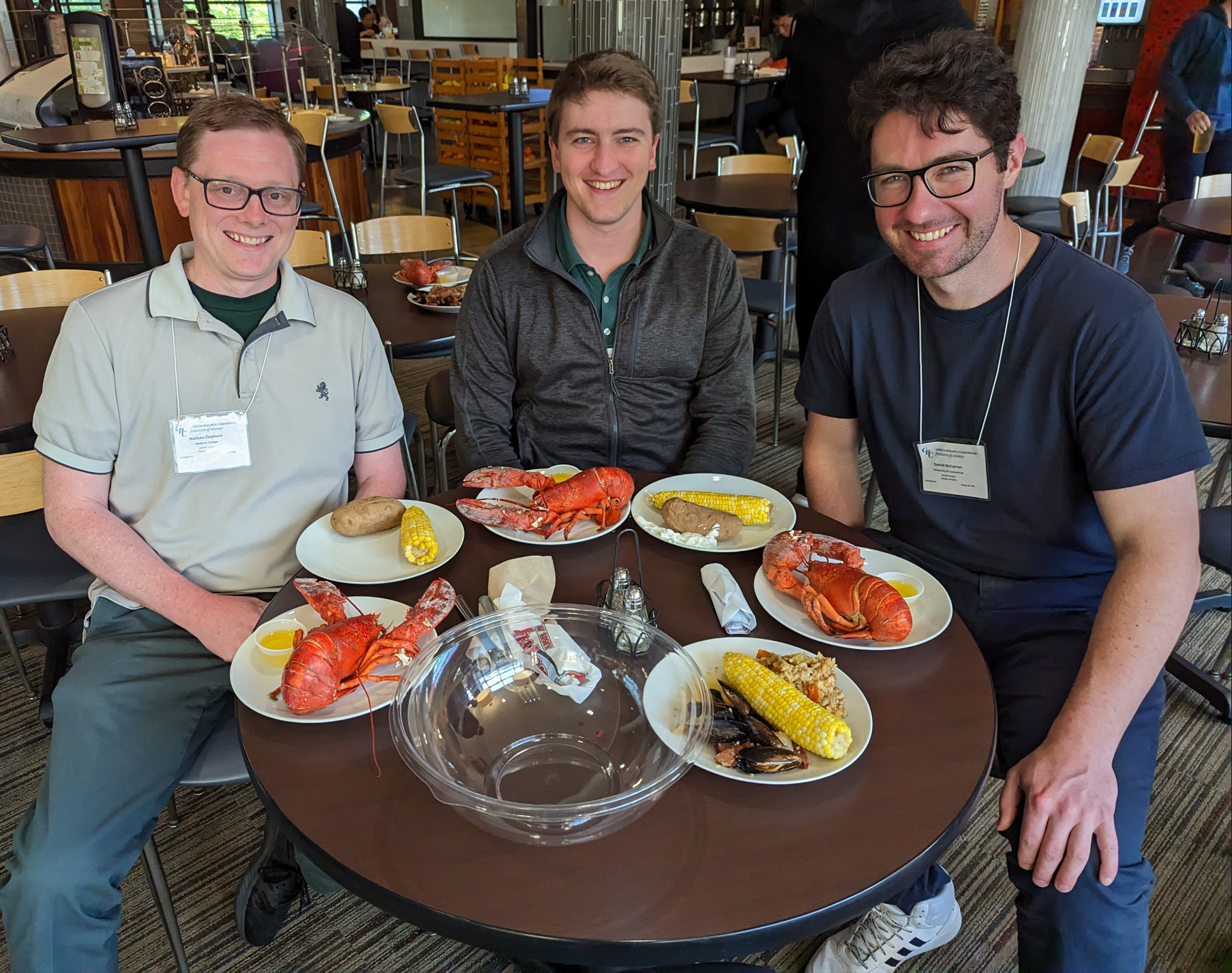
June 2023
We attended the wonderful Gordon Research Conference on Atomic Physics at Salve Regina University, Rhode Island. It was a pleasure to present our research, catch up with old friends and also make some new ones.
We’re grateful to Derek Kimball, Heather Lewandowski and others who made this conference possible.
May 2023
It was a pleasure to attend Jamie’s Commencement ceremony to celebrate the completion of his PhD – congratulations!
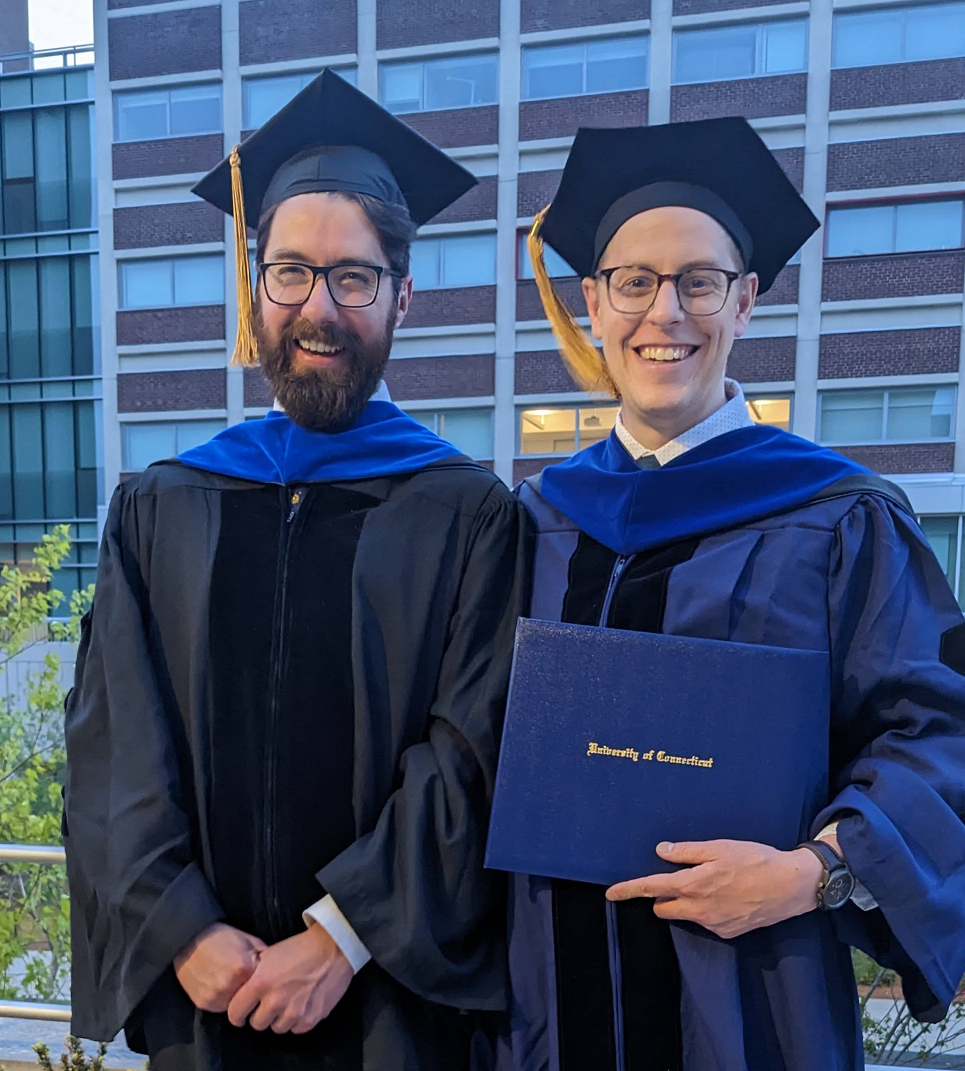
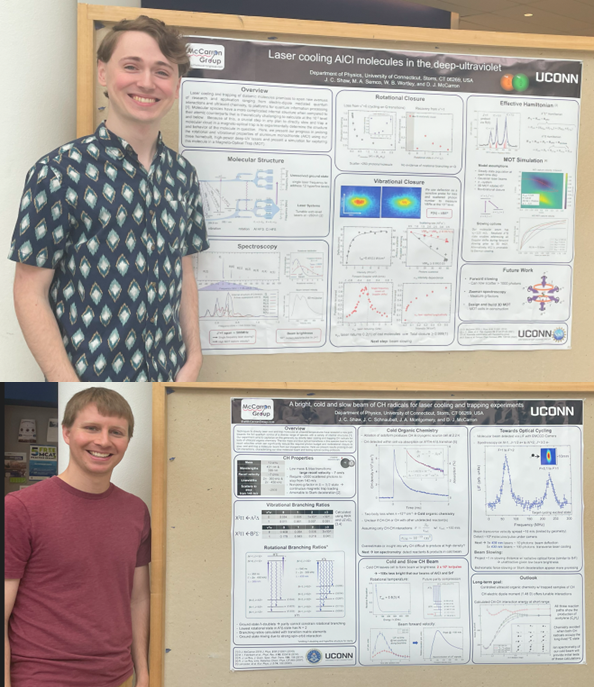
April 2023
Mark and Wil recently took part in our departmental poster session. This was a great opportunity to learn more about what our colleagues are doing while sharing our own research progress.
Thanks to the PGSA for organizing this event.
February 2023
In the images shown, our AlCl beam is propagating from left to right. With only our cycling laser (v00), detected laser-induced-fluorescence (LIF) decreases vs position as molecules are pumped into dark vibrational states. The addition of our first repump laser (v10), prevents loss into v=1 and results in additional LIF as molecules move downstream.
This is direct evidence of both optical cycling and vibrational repumping taking place under our camera. Nice job Mark and Wil on these great data!
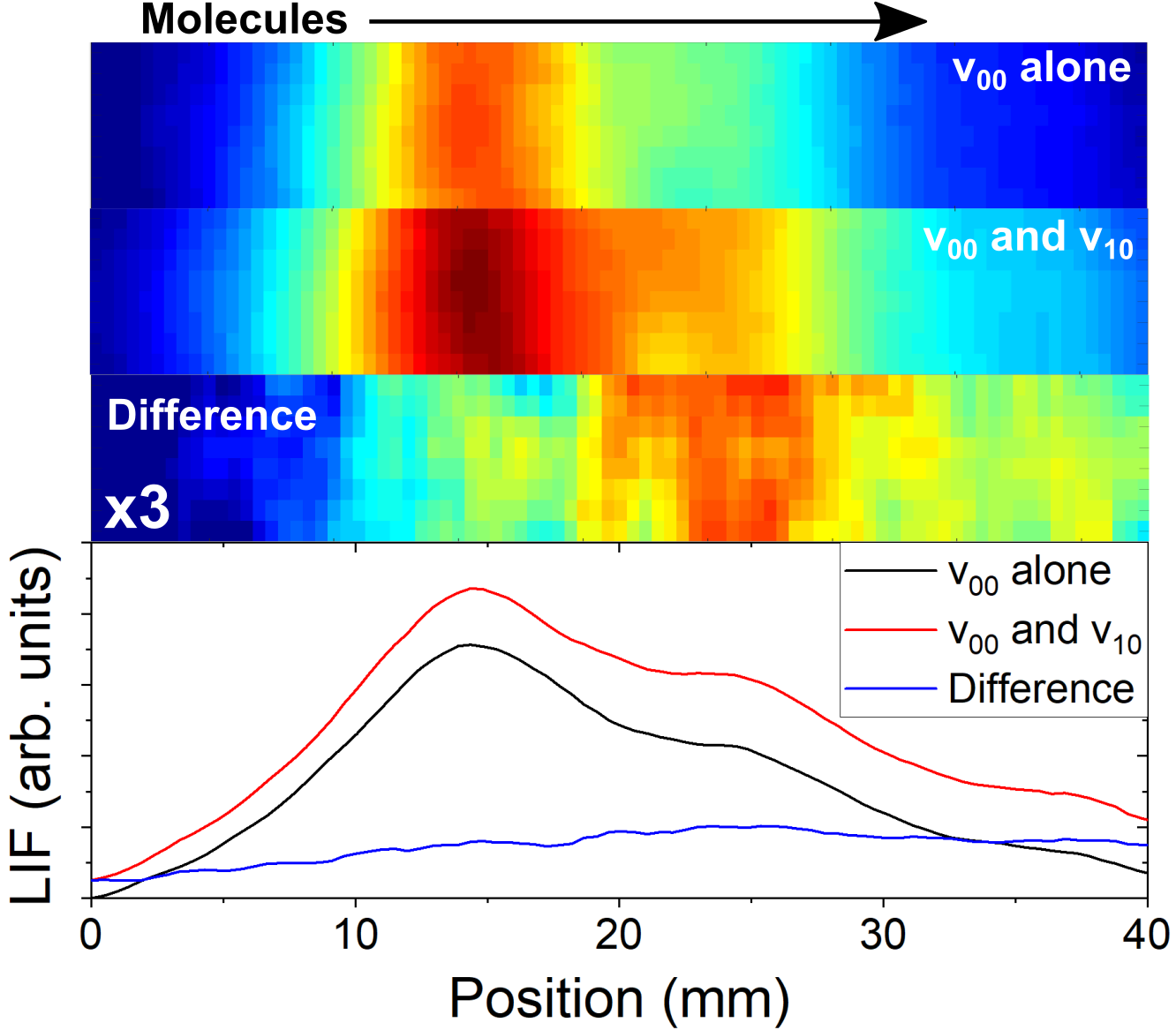
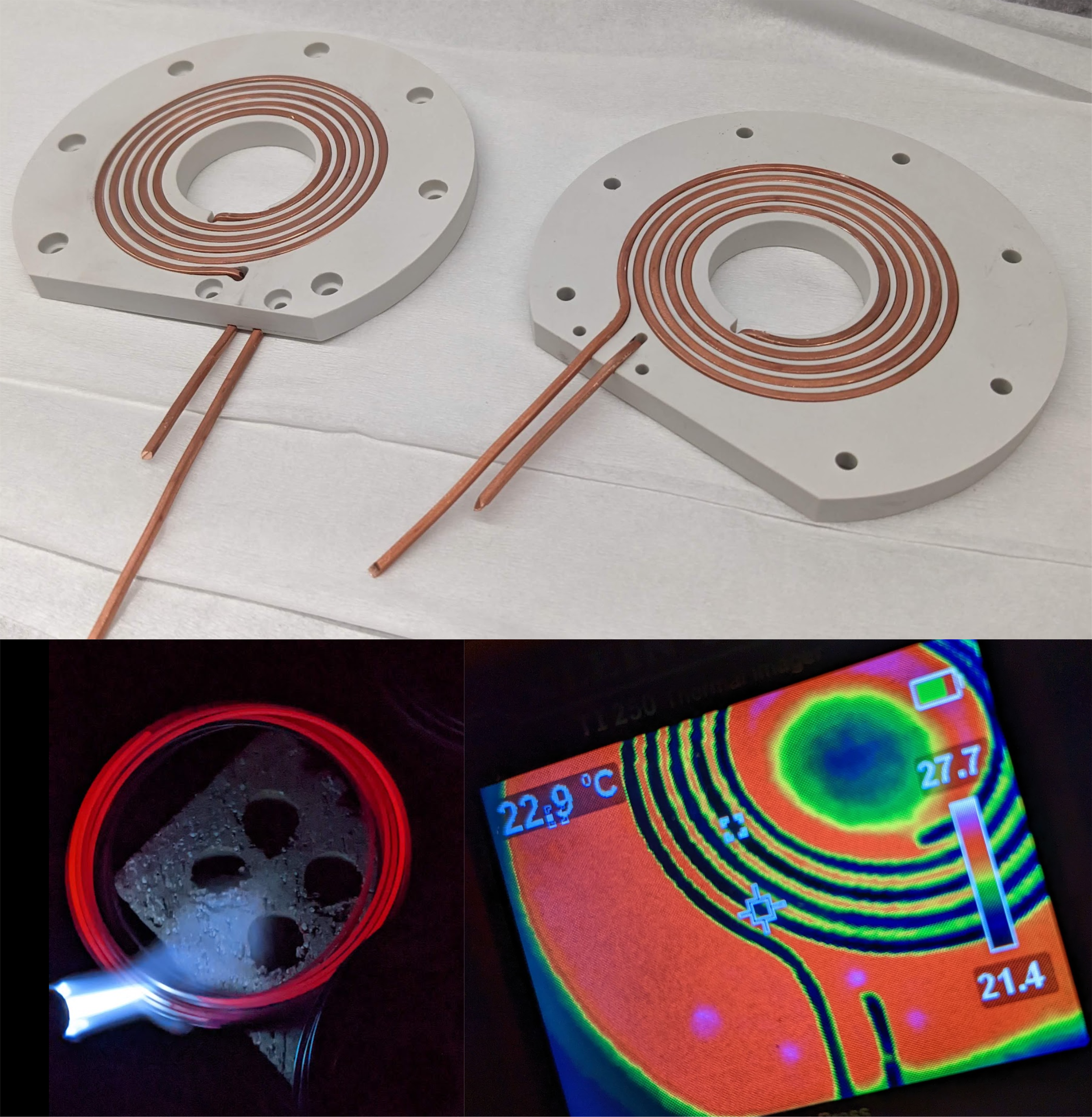
January 2023
Our MOT coils are taking shape nicely. The copper wire was initially difficult to wind by hand so we annealed it one winter evening using a propane torch. It’s great to do this in the dark to easily detect the red glow emitted at our target temperature of ~600C.
December 2022
Congratulations Dr. Jamie Shaw on successfully defending your PhD thesis!
You’ll be greatly missed and we wish you the very best of luck in your new position at MIT Lincoln Lab.
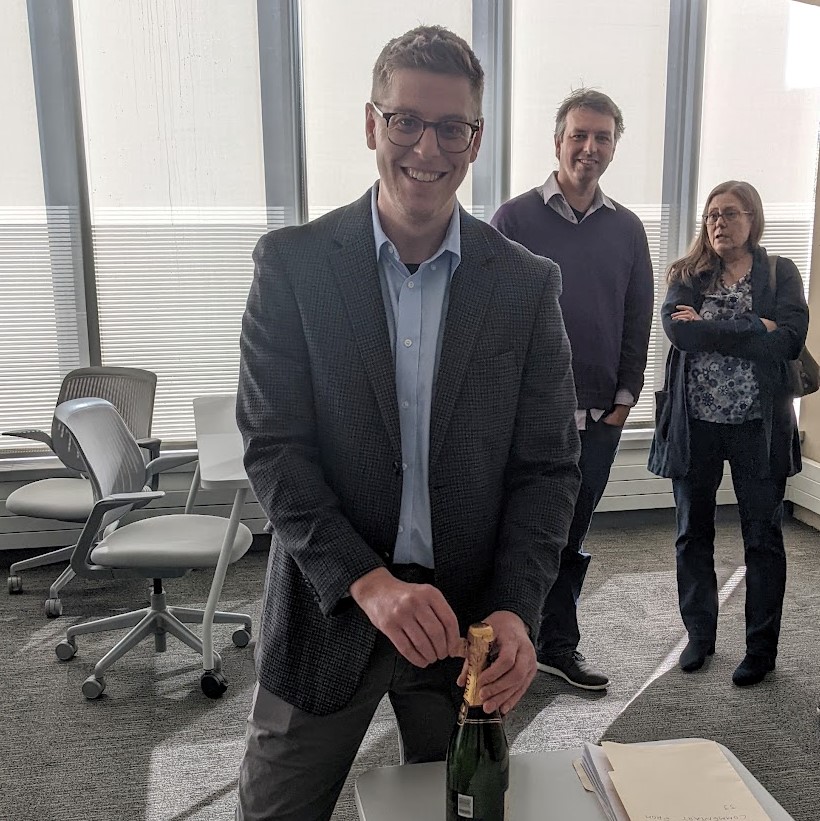
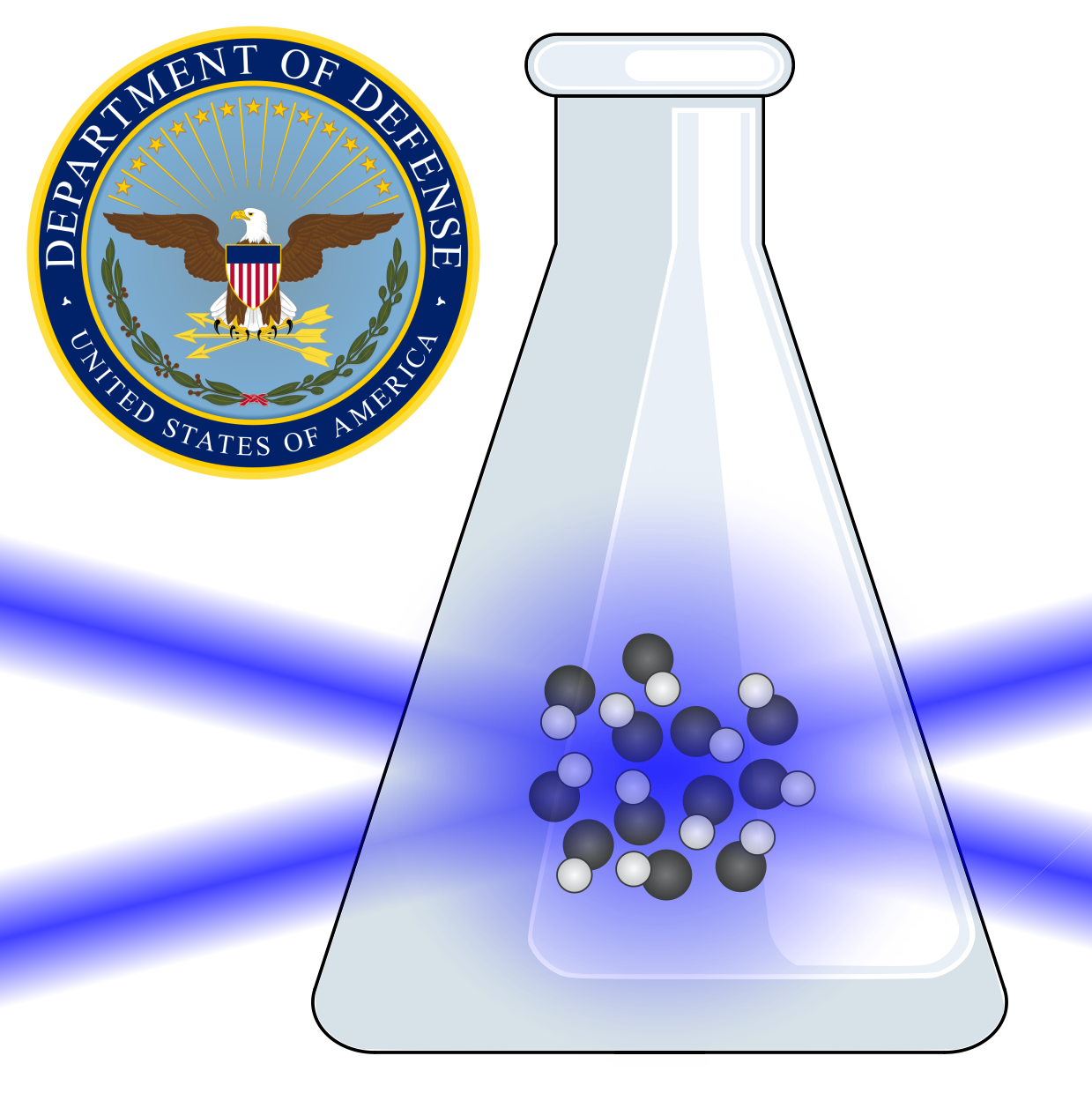
November 2022
We have recently received a DURIP award to realize and characterize stimulated optical forces using CH radicals. This approach looks particularly promising for slowing our molecular beam prior to loading a trap.
We’re very grateful to the AFOSR for their continued support of our research.
September 2022
Our new CH imaging region and detection optics are now installed on the beamline. Initial tests show that this upgrade improves our fluorescence imaging signal-to-noise ratio by more than an order of magnitude.
We are now ready to probe and detect the dark CH rotational states within v = 0 populated through optical cycling.
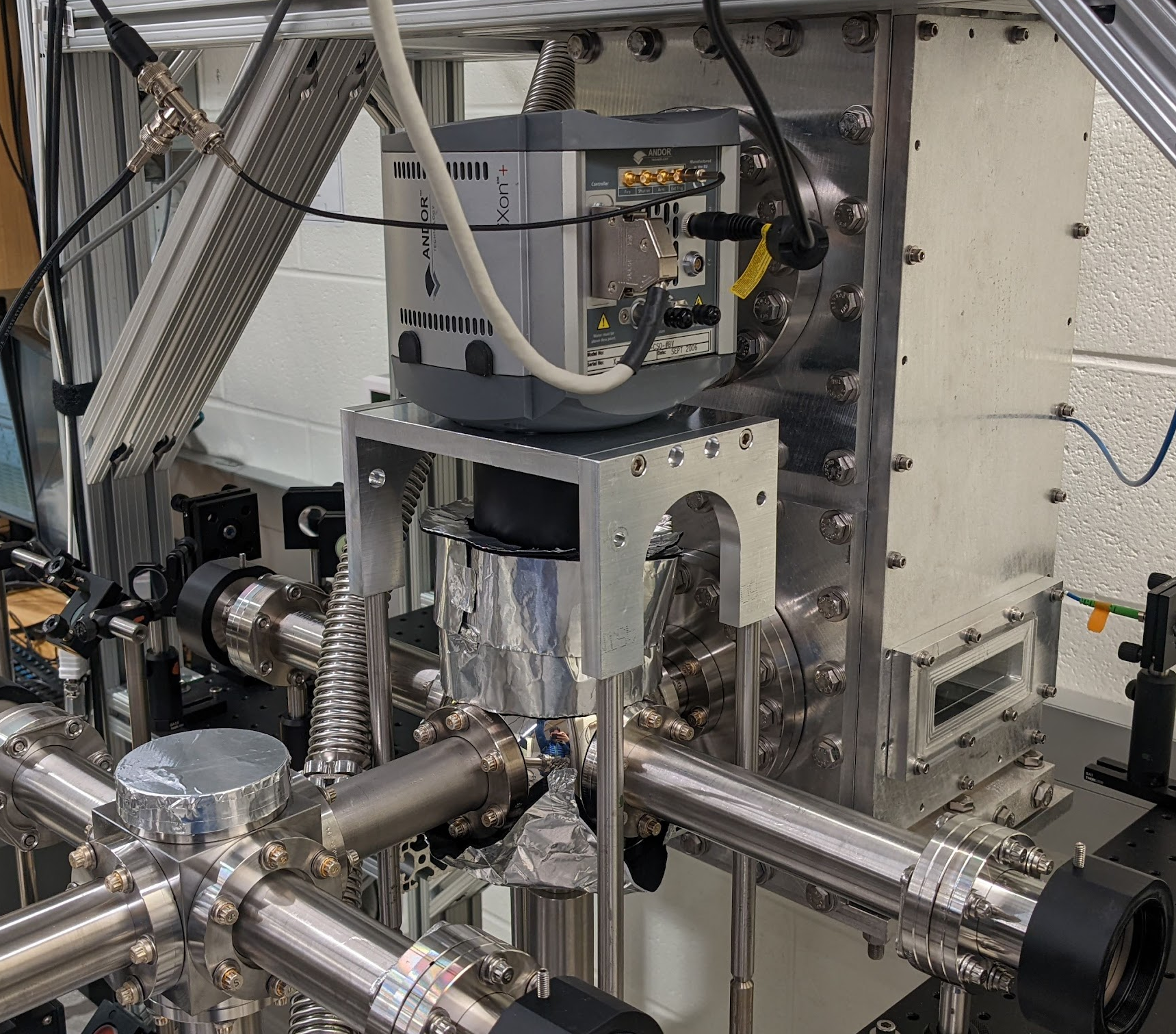
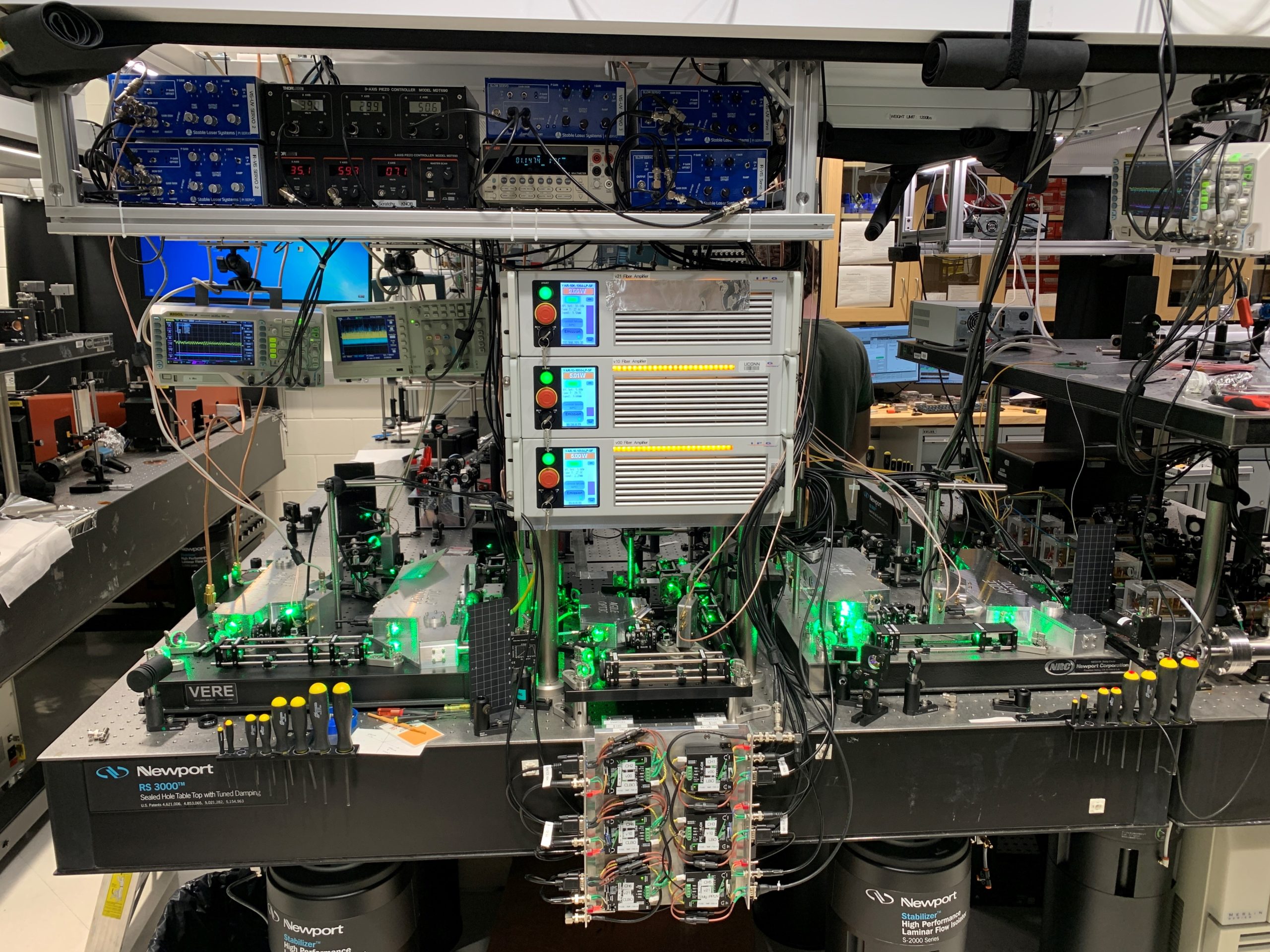
August 2022
We’ve recently constructed a third deep UV laser to repump AlCl molecules lost into v = 2 in the X-state via vibrational branching.
This laser follows a different design to our other UV lasers and is capable of producing ~500 mW at 265 nm. Next up: spectroscopy to find the v21 transition!
June 2022
We are delighted to announce that our CH experiment is now supported by the AFOSR through award number FA9550-22-1-0277.
We are grateful for this support and look forward to probing cold and ultracold organic chemistry with CH radicals soon.
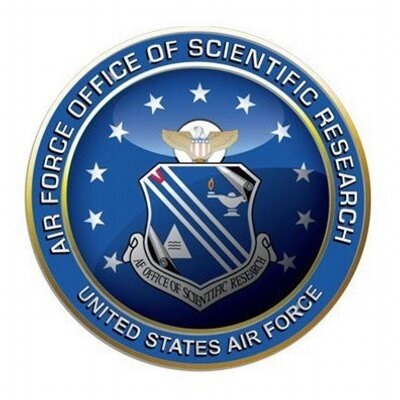
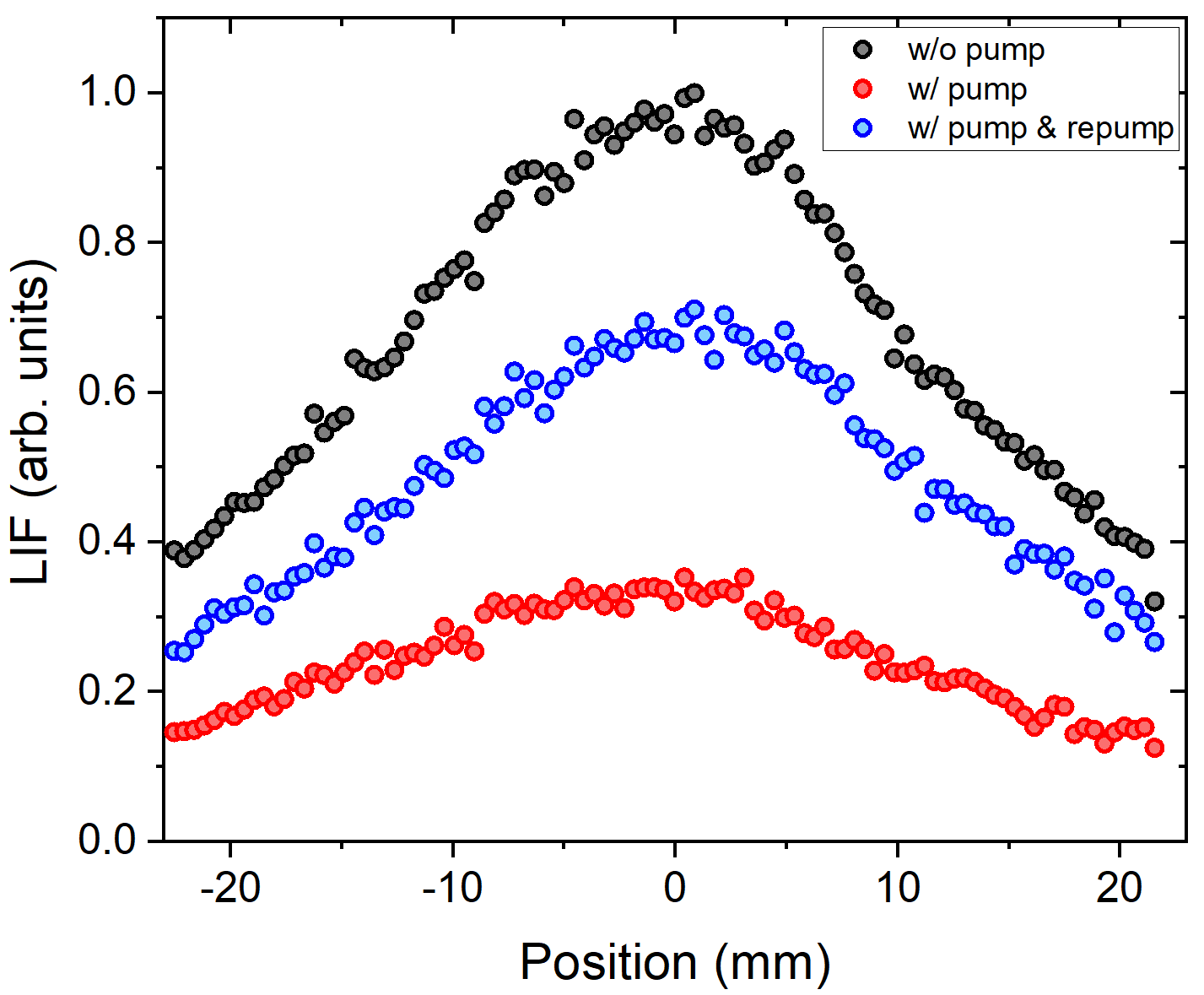
April 2022
We’re now using our second high power deep UV laser to repump AlCl molecules lost into v=1 via vibrational branching.
Our measurements show that ~50% of molecules lost via optical cycling populate v=1. The remaining 50% decay into vibrational states with v ≥ 2. This relative vibrational branching ratio is in reasonable agreement with ab initio calculations.
February 2022
Recent data show significant loss from our AlCl beam via optical cycling and indicate an effective saturation intensity of 350 mW/cm^2.
Our next goal is to recover these lost molecules using our second high power UV laser as a vibrational repump.
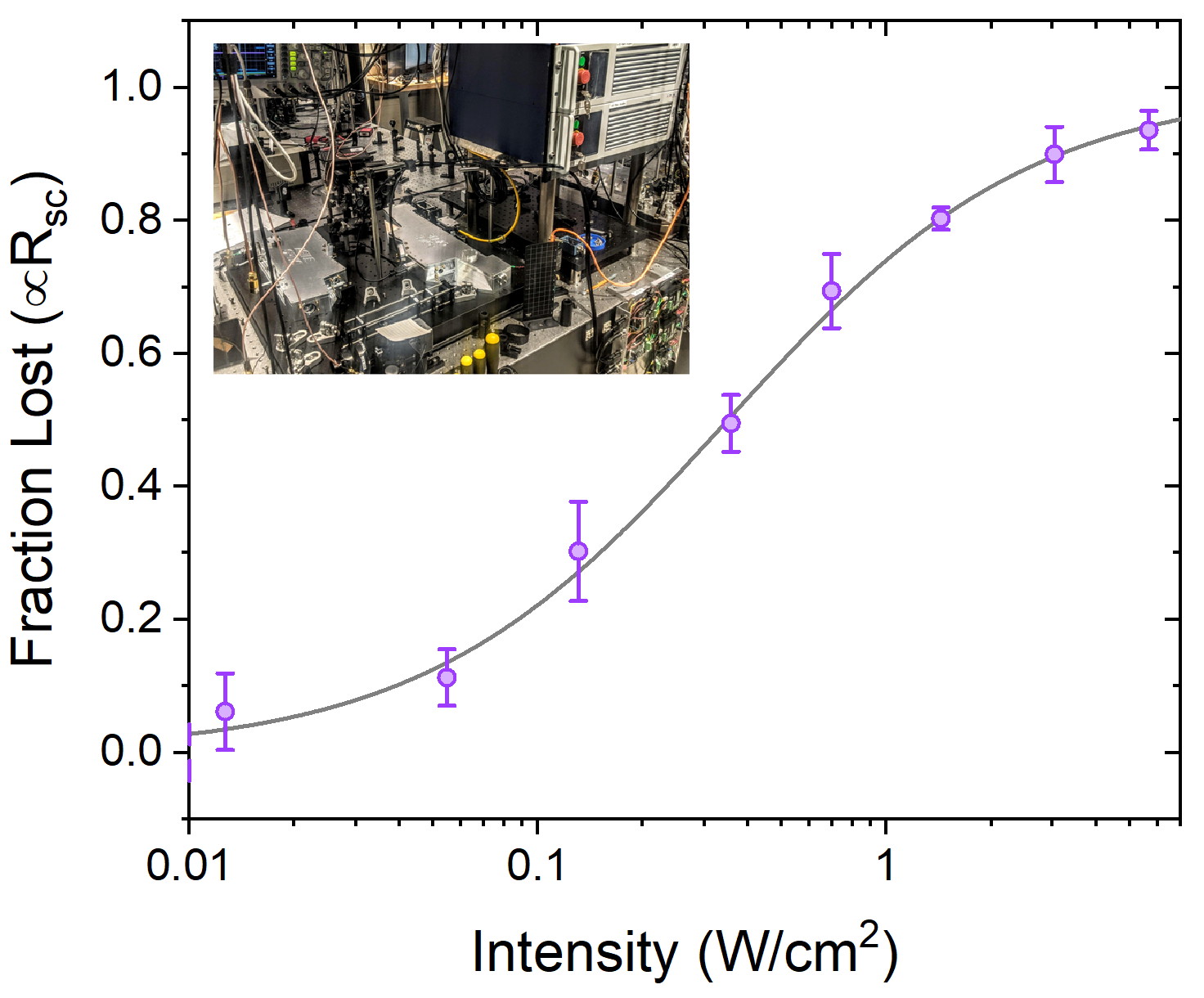
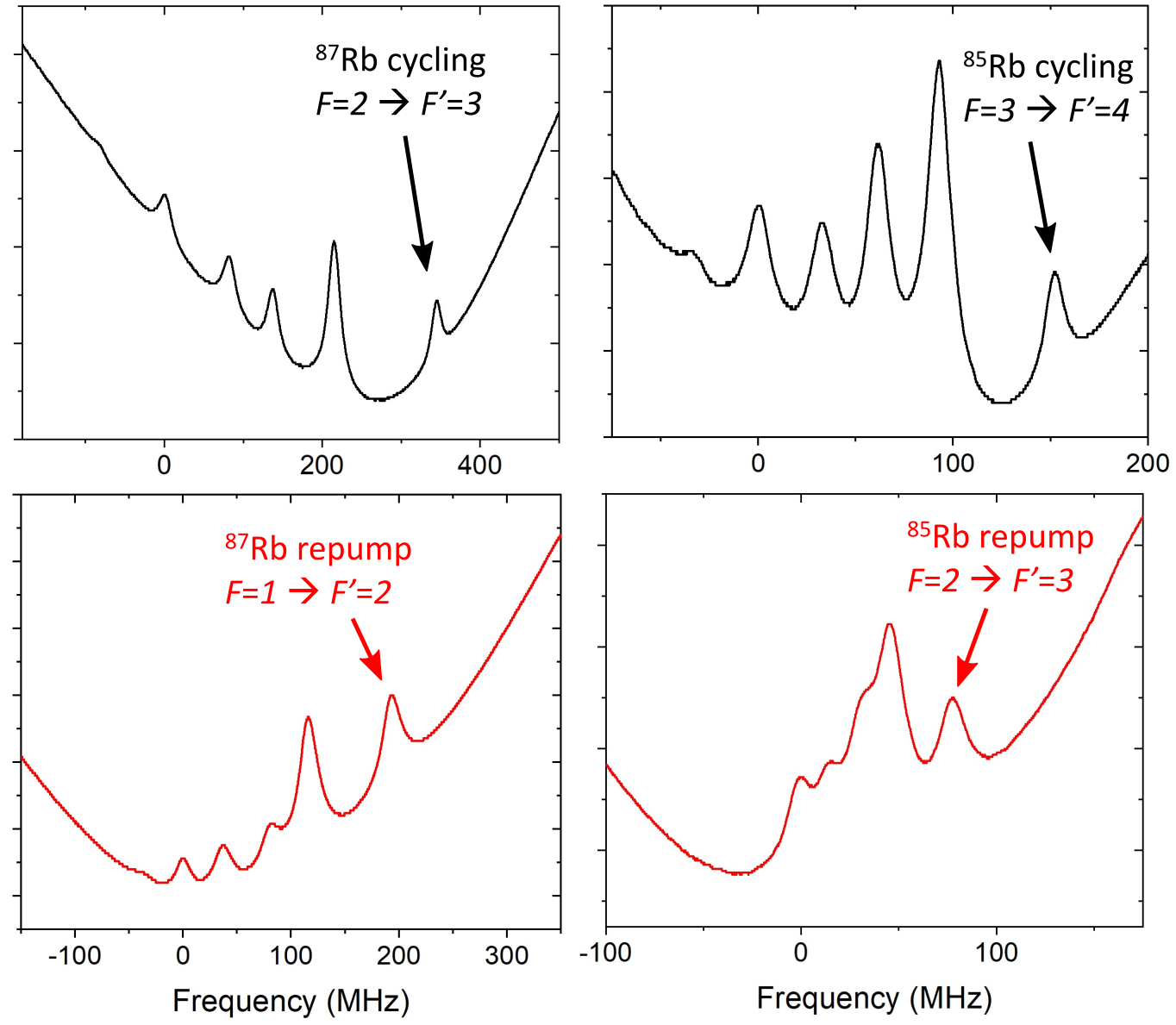
January 2022
Our newest group members have been building lasers at 780 nm and using them to perform saturated absorption spectroscopy in Rb. Nice work Mark & Wil!
These lasers will be used in future laser cooling and trapping experiments as Mark and Wil move on to the more complex world of molecules…
December 2021
Our work manipulating SrF molecules to behave like fluorophores has recently been published in Physical Review Research – congratulations to Jamie and Joey!
Here molecules absorb light at 642 nm and 686 nm while emitting photons at 663 nm for sensitive fluorescence detection.
October 2021
Our recent work realizing a 2 W deep-ultraviolet laser system has been published in Optics Express – congratulations Jamie!
This laser, and other similar systems currently under construction, will be used to laser cool and trap AlCl molecules.
September 2021
We recently virtually hosted a visit from Prof. Mike Tarbutt of Imperial College London. Mike gave the Pollack Distinguished Lecture and told us about his beautiful research laser-cooling CaF and YbF molecules.
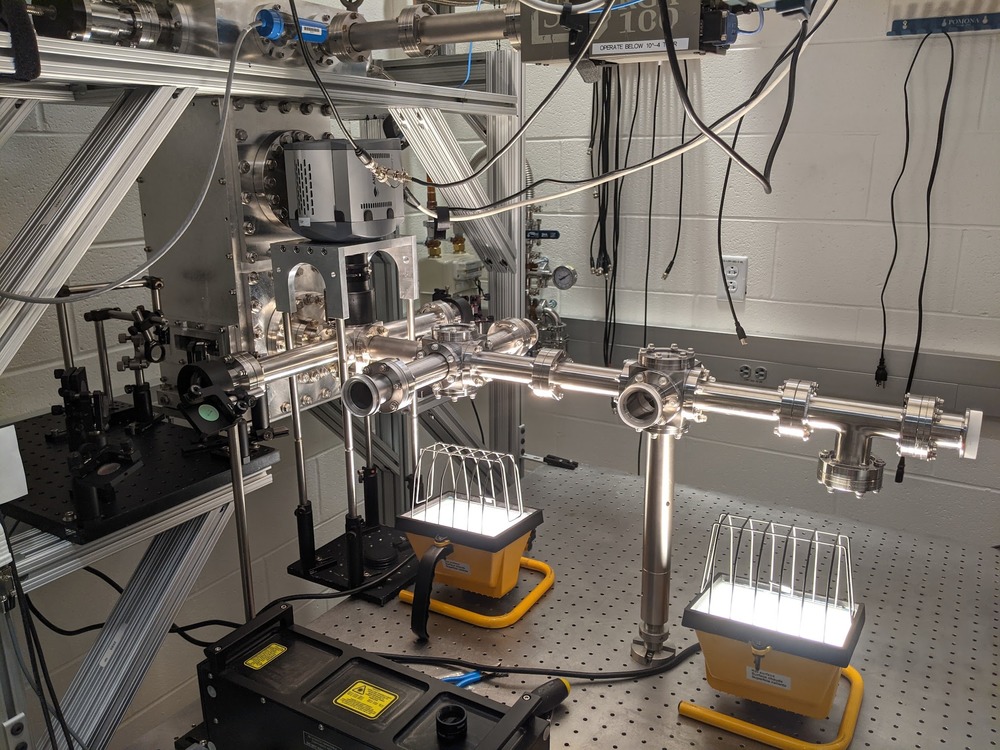
July 2021
Our extended CH vacuum system is now assembled and leak-free.
This setup will enable a variety of optical cycling experiments on our beam of CH molecules.
May 2021
We have recently detected a beam of cold CH radicals from our cryogenic source using laser induced fluorescence at 431 nm.
Preliminary measurements indicate that the beam rotational temperature is ~0.5 K and the mean forward velocity is ~130 m/s. We will now work to both increase the flux and demonstrate optical cycling in CH.
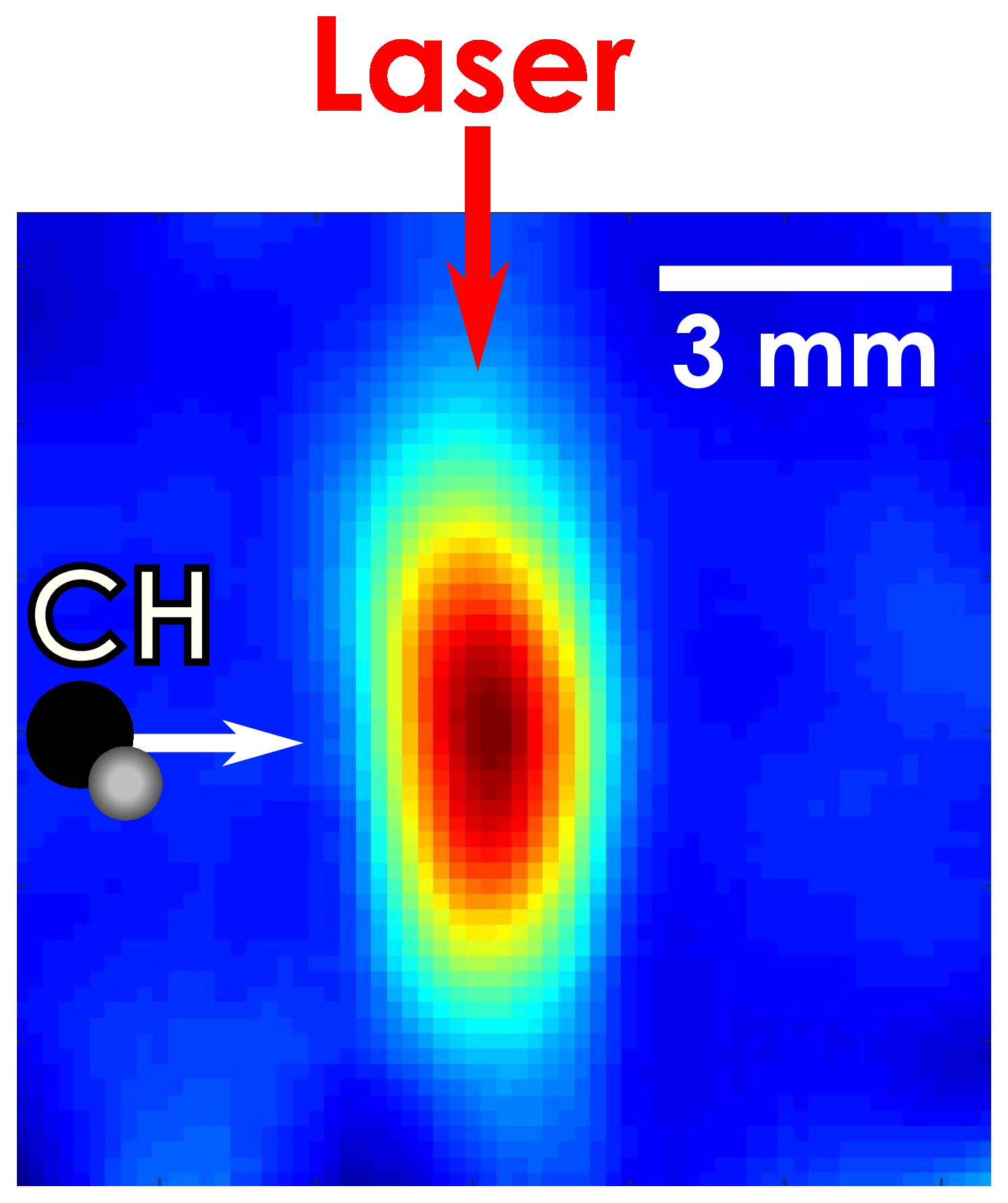
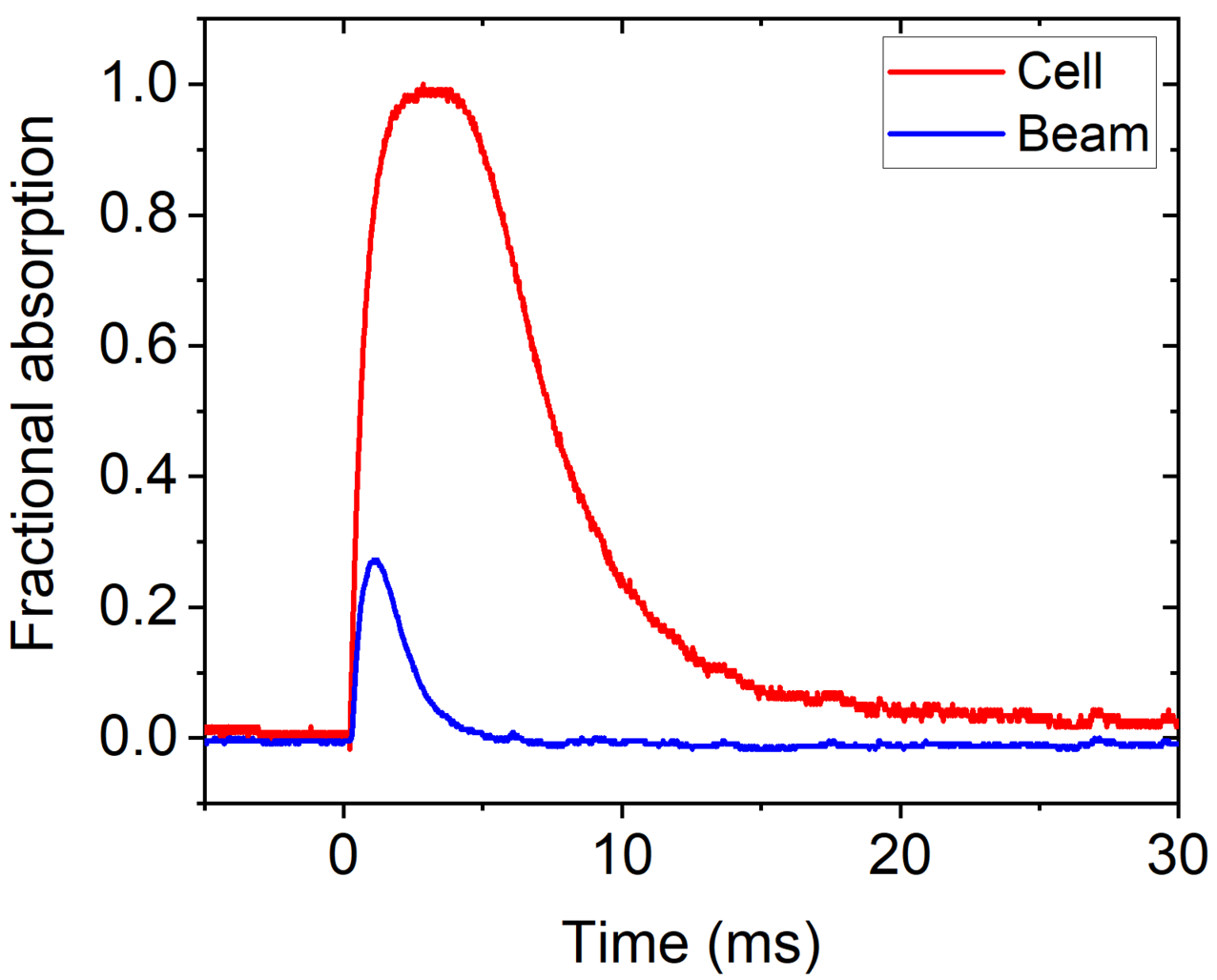
April 2021
We can now detect cold AlCl molecules using our UV laser to excite the X-A transition at 261.5 nm. Inside the source, we measure a peak optical depth > 4 and produce a beam of AlCl molecules containing ~4 x10^(11) molecules/steradian/pulse in the rovibrational ground state.
We’re very grateful to the Hemmerling Lab at UC Riverside for sharing their experience producing AlCl via laser ablation.
Our next steps are to fully characterize the molecular beam and perform spectroscopy relevant to optical cycling in this species.
February 2021
Phase 2 of our homebuilt UV laser system is nearing completion. We currently produce up to 1.8 W of laser light at 261 nm from our second bowtie cavity. This is a serious amount of continuous UV power!
Our focus on this experiment will soon shift to use this light to detect cold AlCl molecules from our cryogenic source.
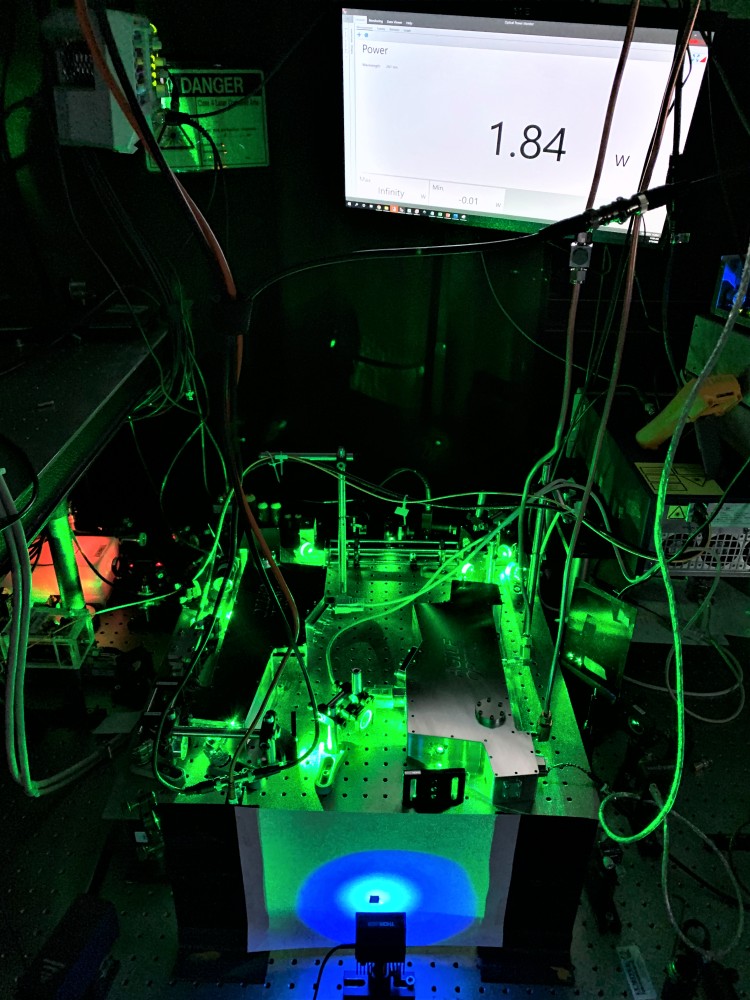
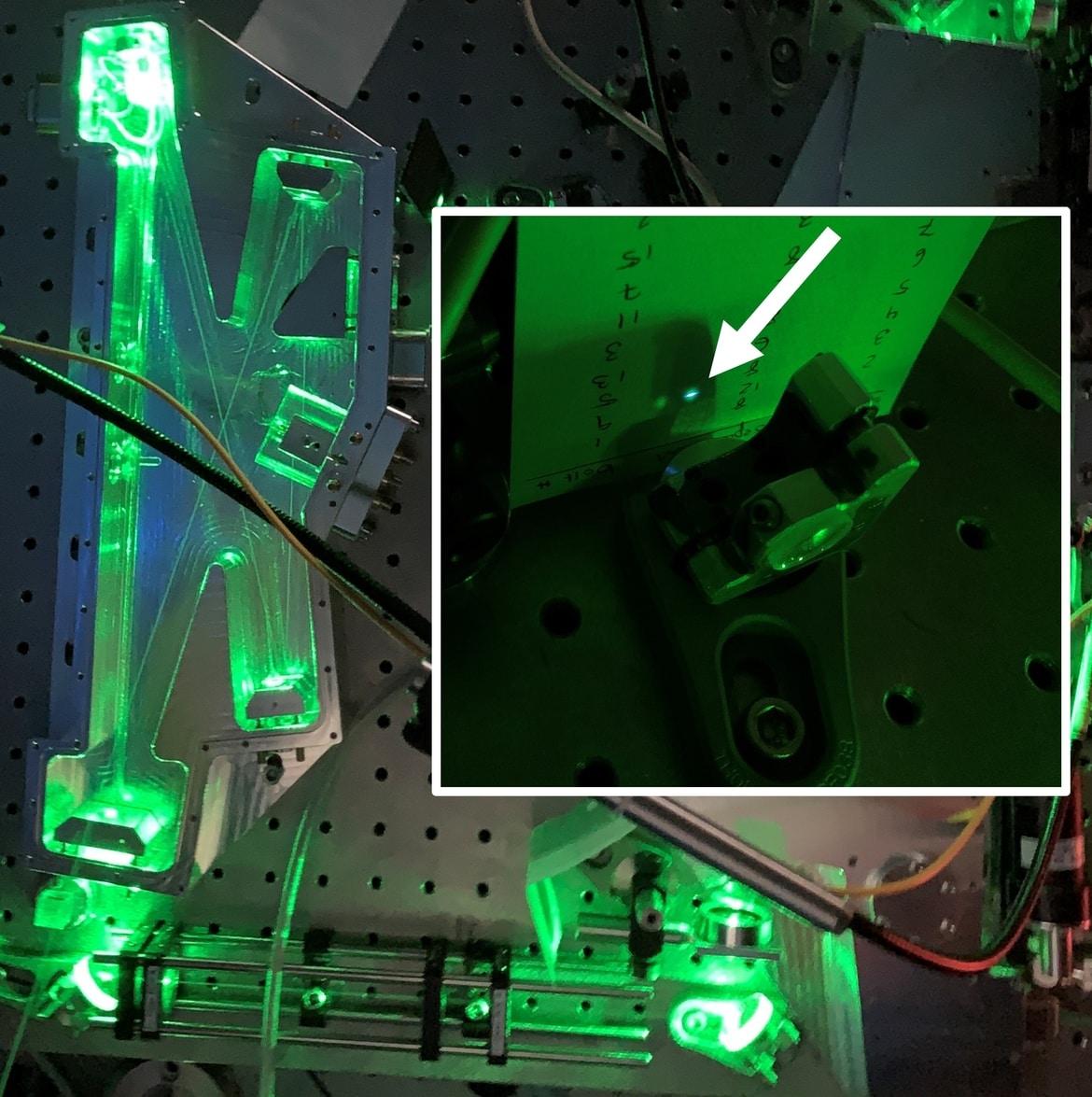
December 2020
We’ve recently started to produce our first ultraviolet laser light at 261 nm. We currently make ~50 µW of UV light using 1.5 W of green through a single-pass of our nonlinear crystal. There’s still lots to optimize but this is a great first step!
In the near future we will close and stabilize the length of our bowtie cavity. This will realize significantly higher green light intensities and enable more efficient frequency-doubling.
November 2020
Phase 1 of our homebuilt UV laser system is almost complete. We currently frequency-double 10 W of infrared laser light into 6 W of green. Congratulations Jamie on all of your hard work!
Next up, in phase 2, a second frequency-doubling stage will produce light in the ultraviolet. Stay tuned to learn more…
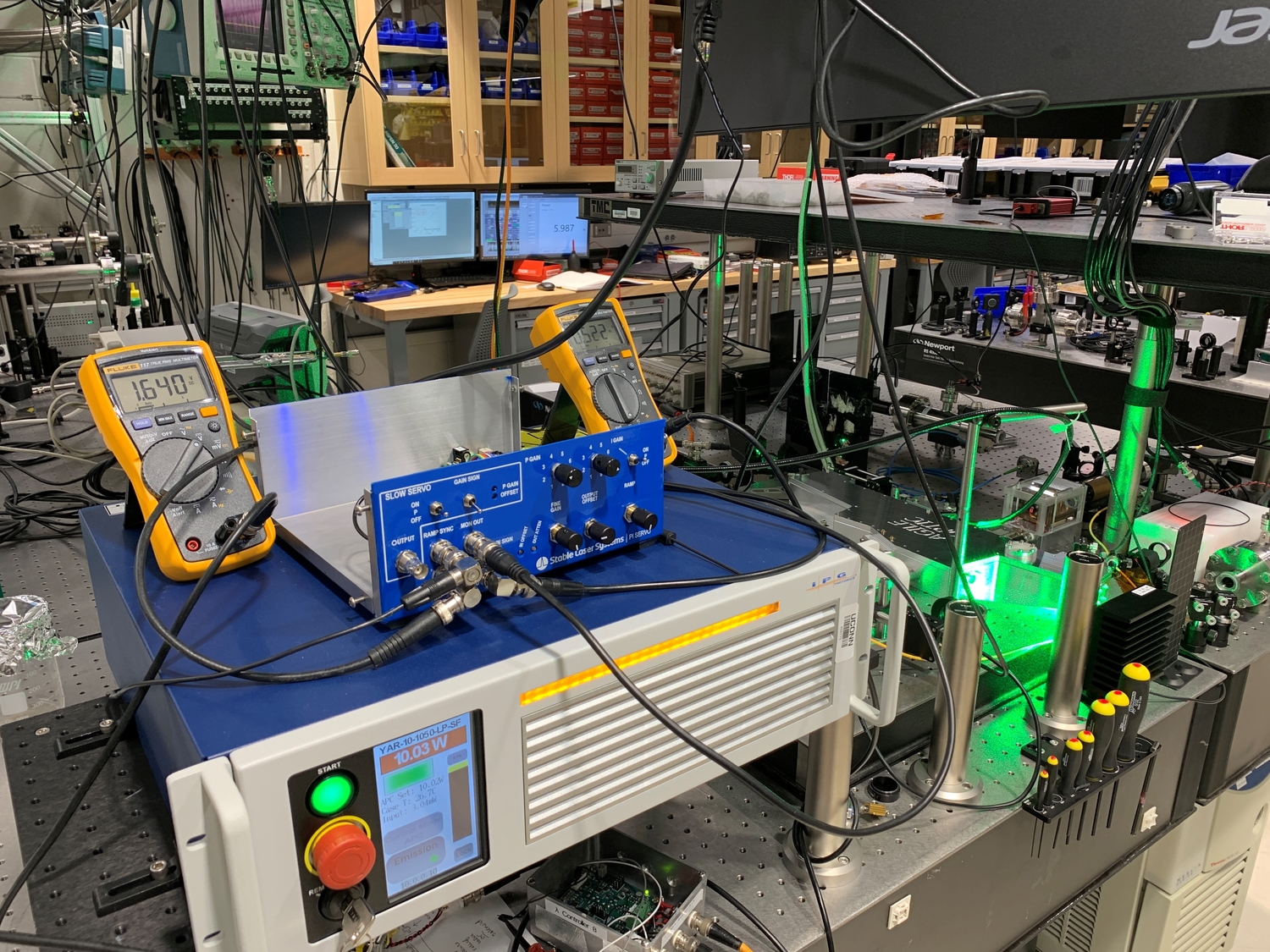

October 2020
Our work realizing a new cryogenic source design for cold, slow molecular beams has been published in Phys. Rev. A.
This source can produce bright, continuous beams of molecules via ablation at 55Hz, provided that the He buffer gas flow ≥ 10 standard cubic centimeters per second.
September 2020
We have recently detected the first CH absorption signals within our cryogenic source using the X-A transition at 431nm.
This feature shows that we make 6 x 10^(11) molecules per ablation pulse in the rovibrational ground state when ablating an iodoform target. We detect similar features when ablating cold paraffin wax.
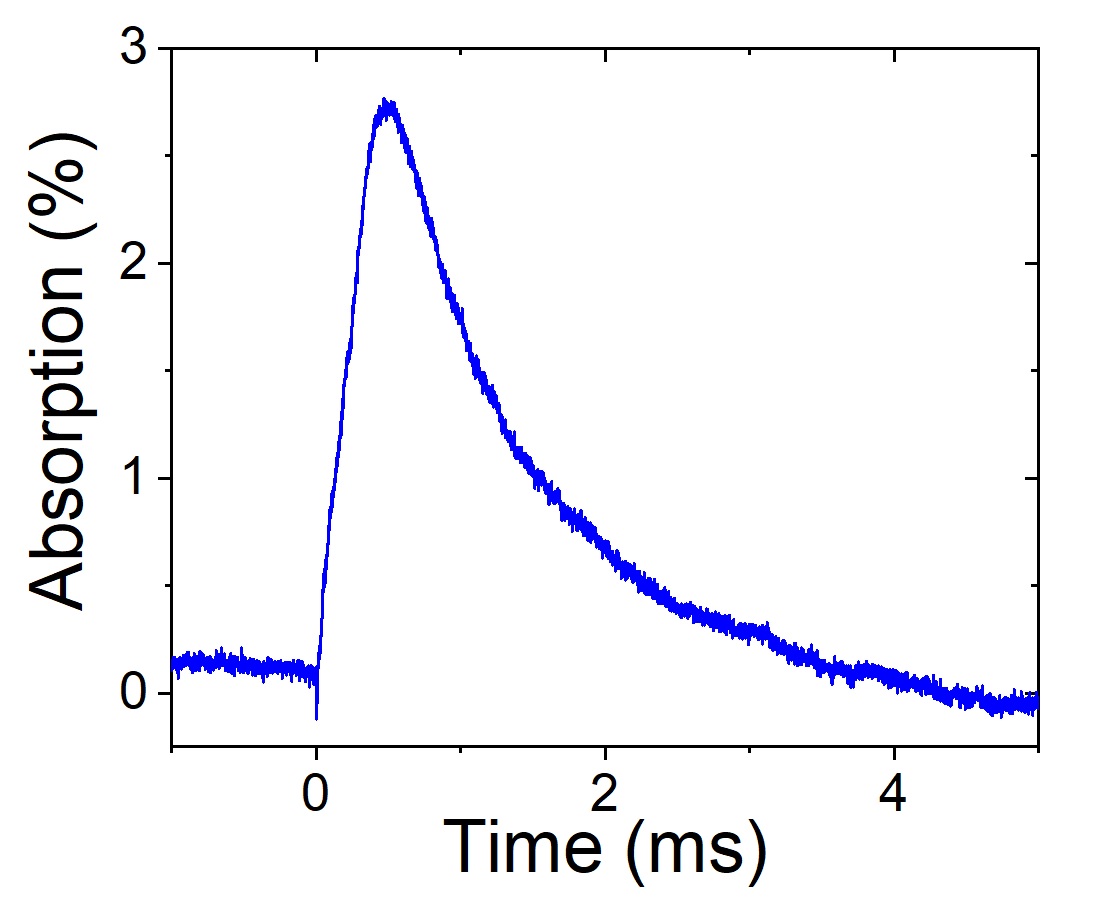
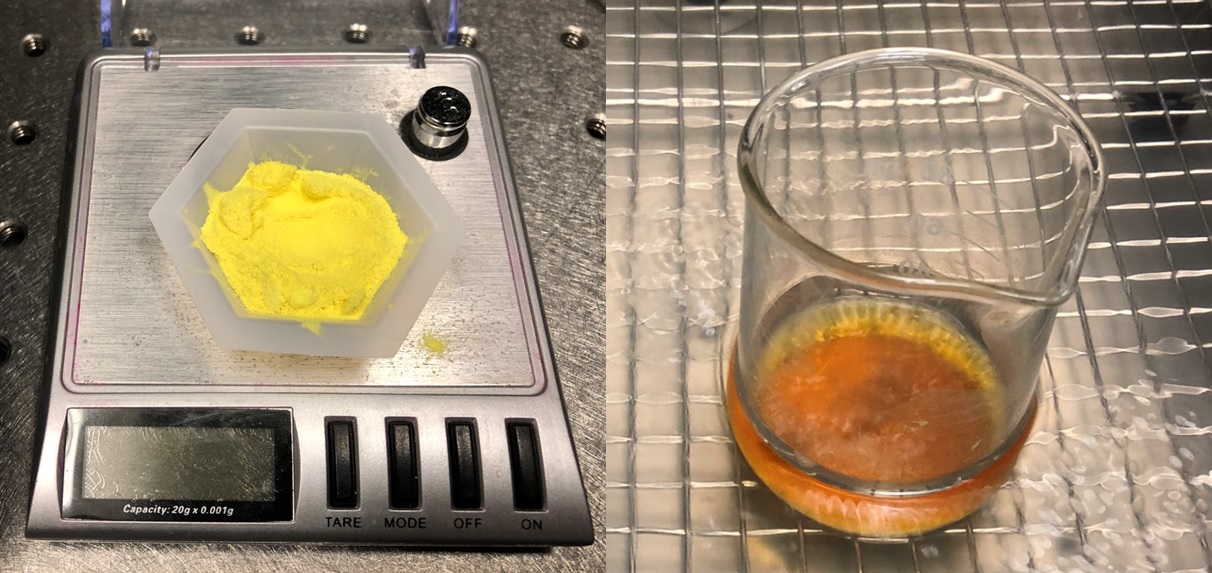
August 2020
Making a CH ablation target 101.
CH is highly reactive and therefore challenging to produce. One direction we’re pursuing is a variant of the Lewandowski/Weinstein method using iodoform from this paper.
July 2020
Our initial work with SrF molecules is over. We’re now working towards producing and detecting cold beams of AlCl and CH radicals.
The first step is the mass production of Fabry-Perot cavities and external cavity diode lasers. These parts, combined with our HeNe reference lasers, will allow us to define the frequencies of our lasers to better than one part in 100 million.
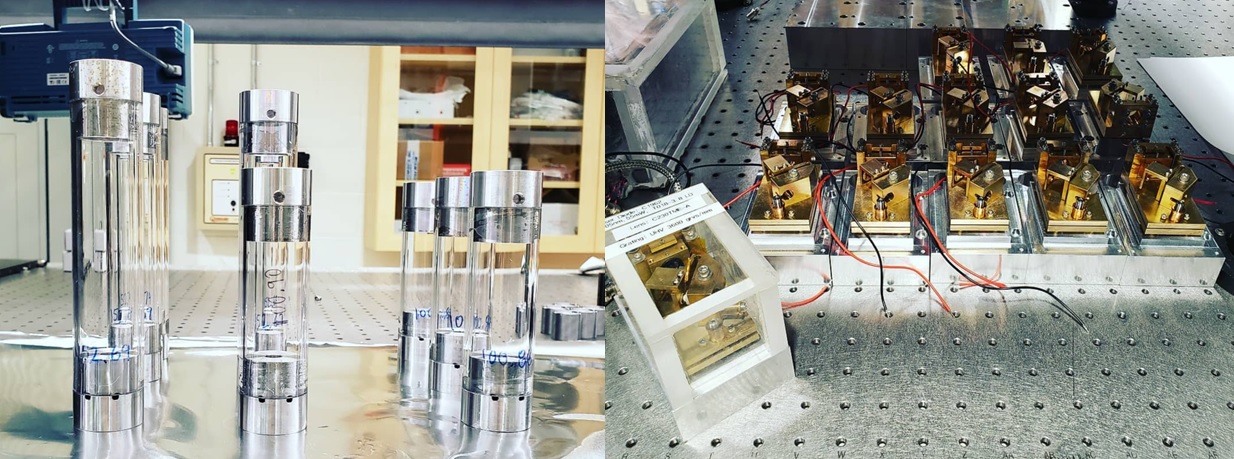
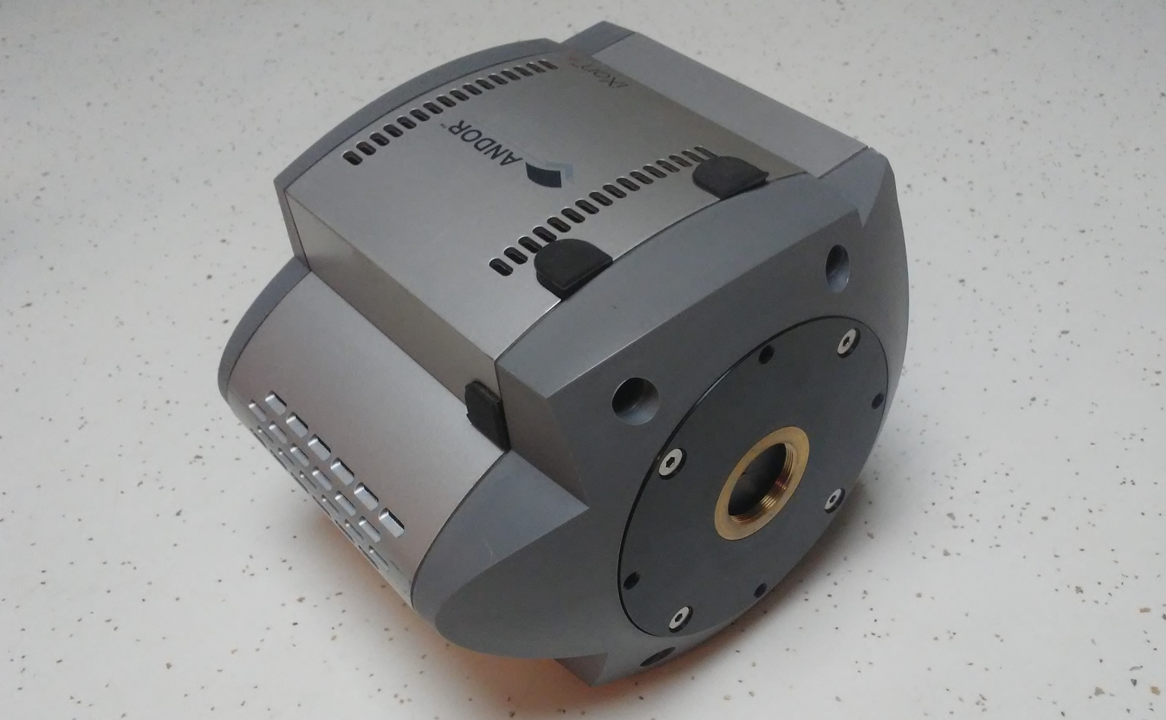
April 2020
The ongoing COVID-19 pandemic means that new equipment is received at home rather than the lab. It’s a little strange having our new electron-multiplying CCD camera on my kitchen counter…
March 2020
We recently confirmed that our second cryogenic source is working by producing pulses of our test-species, SrF. Here we detect molecules in X(v=0, N=0) via the absorption of resonant laser light.
We produce ~10^(11) molecules in this rovibrational state per pulse and can now move on to work with CH molecules.
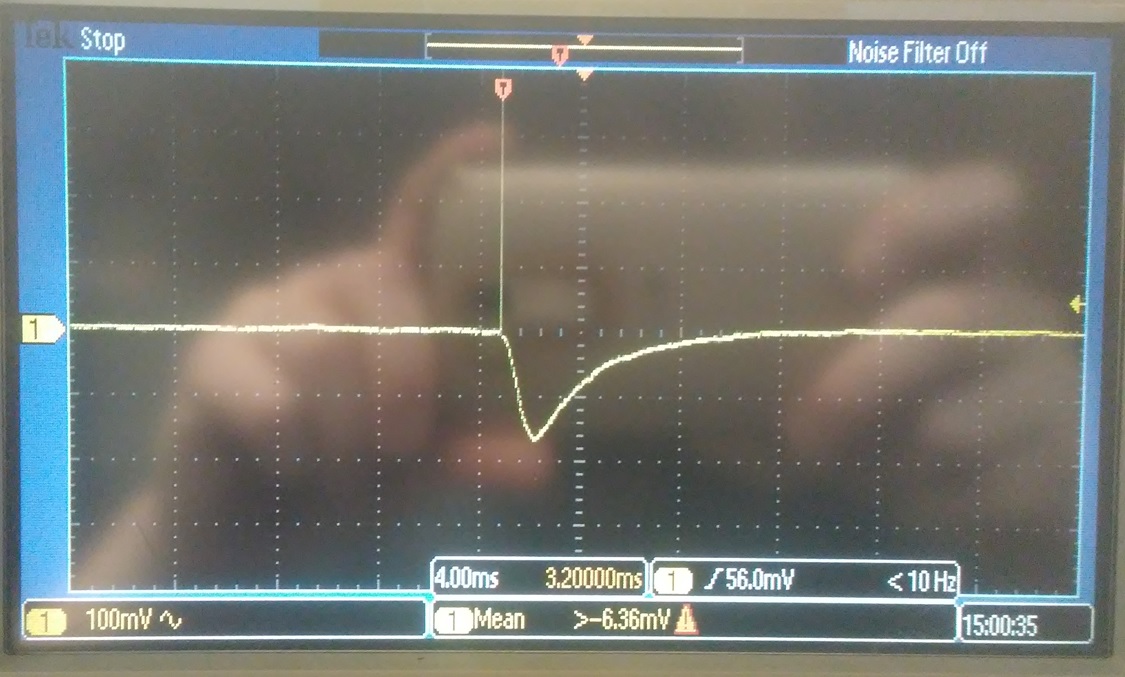
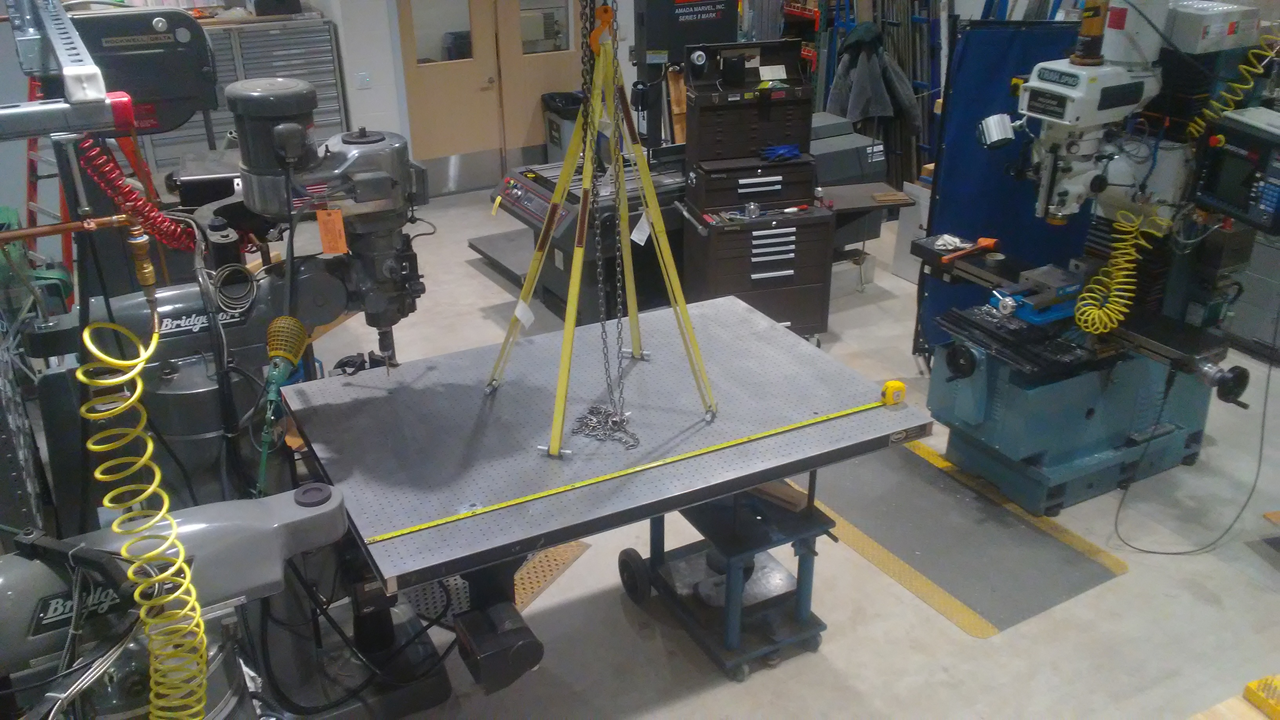
February 2020
Several of our large optical breadboards required through-holes to allow us to mount them in the new lab.
Thanks to Ray Celmer in our machine shop for making this happen!
February 2020
A frequency doubled M-Squared SolsTiS laser arrived this month. This tunable laser system can emit light between 700 – 1000 nm and 350 – 500 nm. This light will be invaluable for our initial spectroscopy on CH molecules and for exciting specific transitions in AlCl molecules.
Sadly, the box must remain closed until an M-Squared technician is on site…
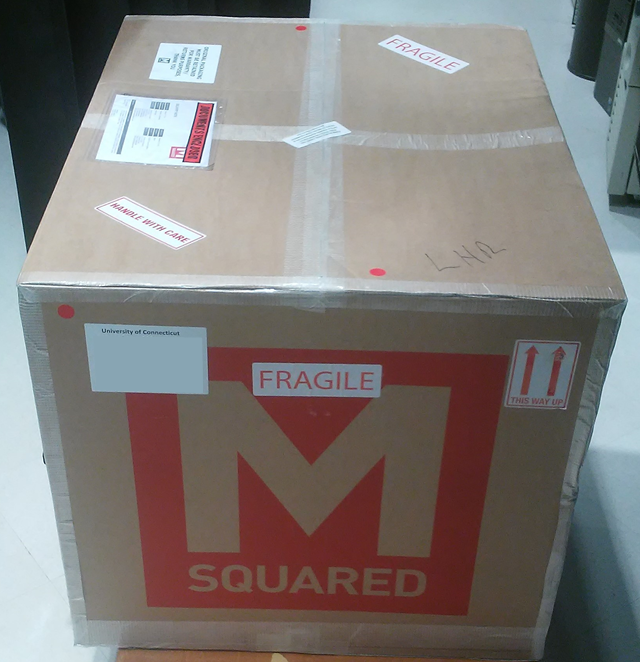
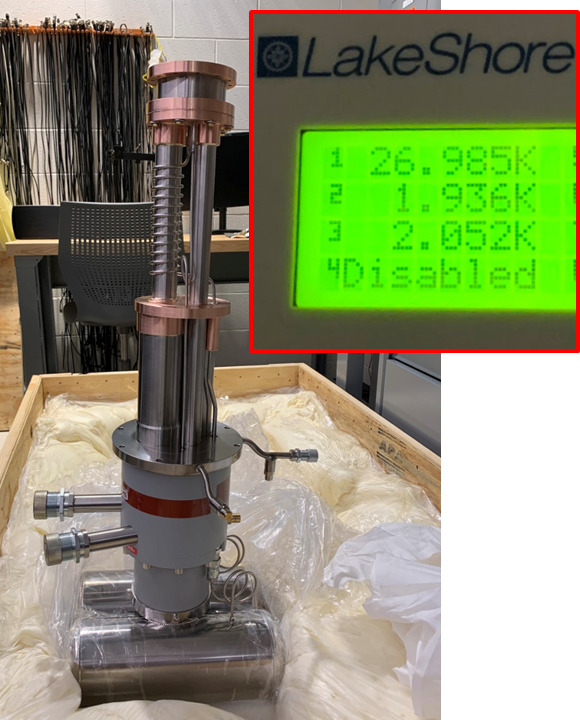
January 2020
Our second pulse tube refrigerator is now installed in our latest cryogenic source for experiments using CH radicals.
This source reaches a lab-record low- temperature of ≈ 2 K!
December 2019
Our new and improved HeNe reference laser is ready to test. Various lasers in our lab are stabilized to this reference via broadband transfer cavities.
Edit: Spectroscopy on our molecular beam shows that this laser has been stable to ~1 MHz over the past 4 months.
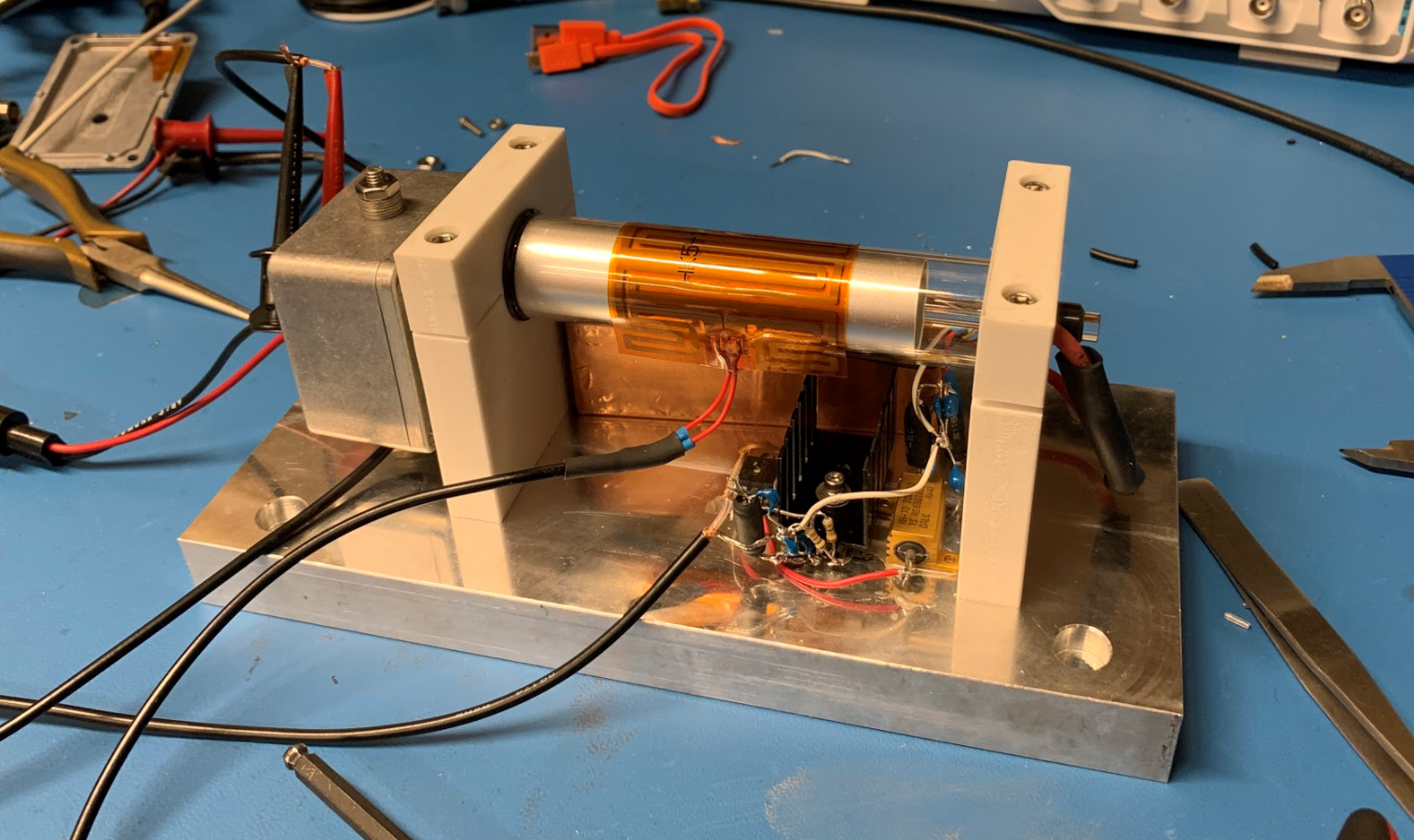
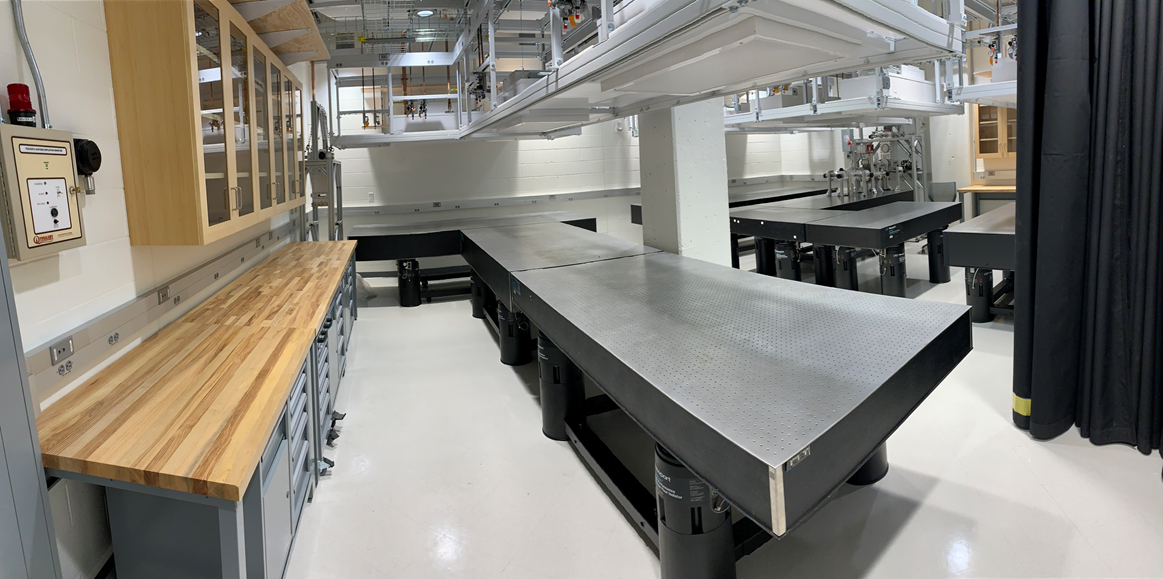
October 2019
Our new lab is starting to look and feel more like home now that we have our optical tables in place.
October 2019
A photo of our spectroscopy system being moved to the new lab while at a pressure of ~10^(-8) Torr.
Thanks to G&F Moving for getting this, and our other optical tables, transported safely.
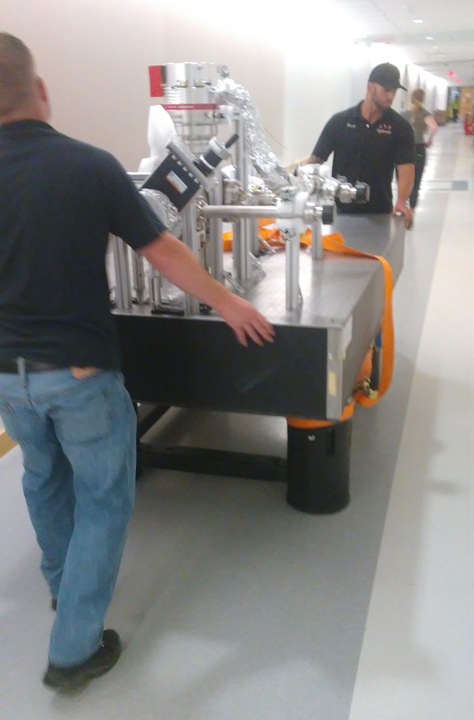
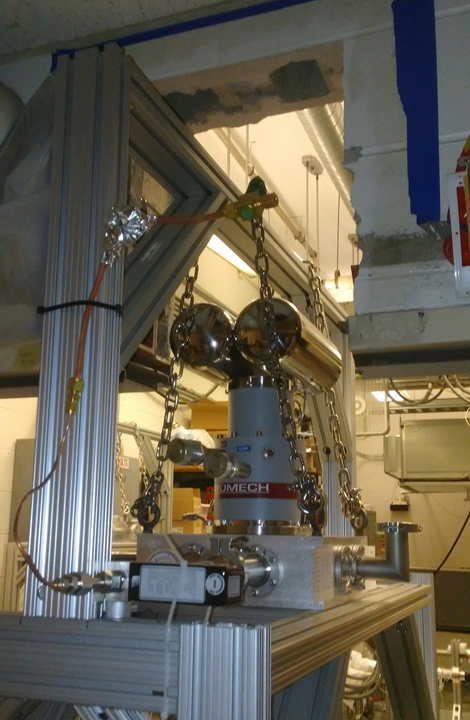
October 2019
Special thanks to Whiting-Turner for “modifying” the door frame to our old lab.
This allowed our cryogenic source to move into our new space as-is and saved us a lot of time.
September 2019
The finishing touches are being applied to our new space as we continue to pack.
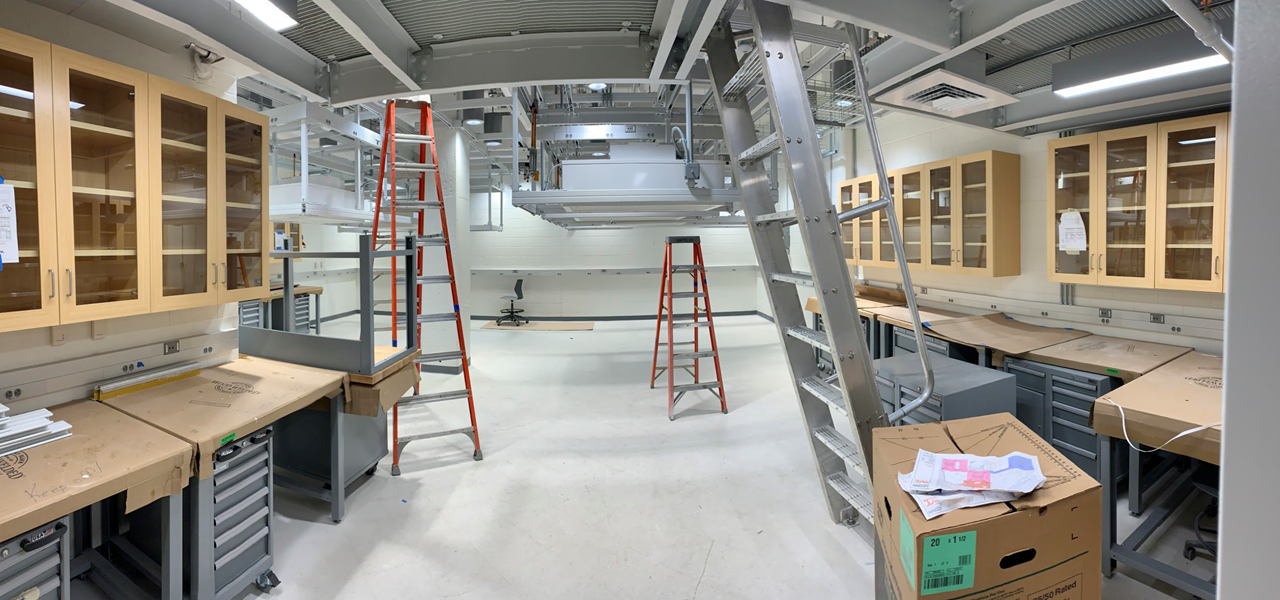
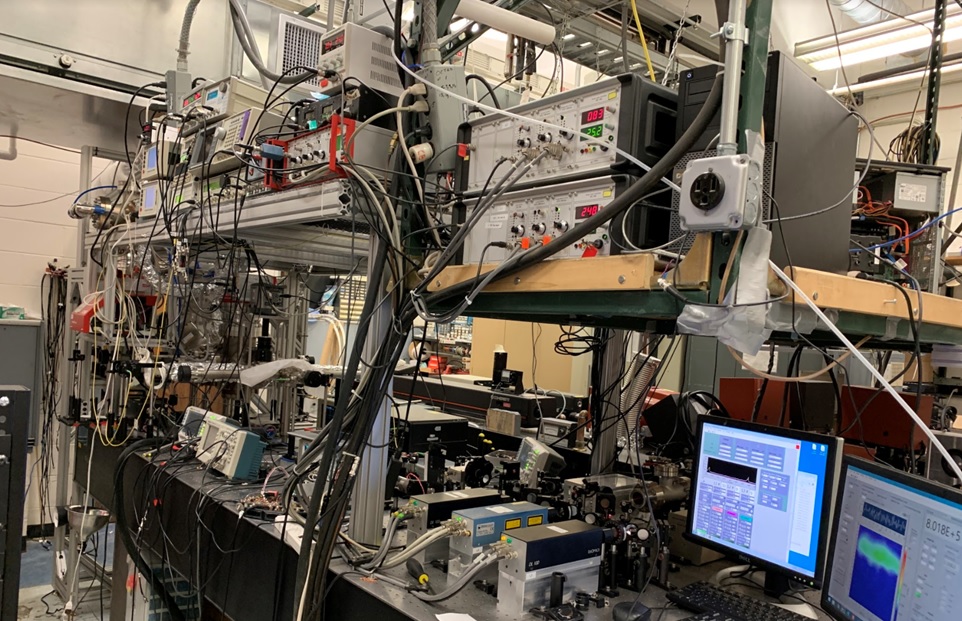
August 2019
A big welcome to new graduate student Joey!
You’ve joined us just in time to help disassemble and pack our current experiment in its temporary space.
June 2019
Our new lab is taking shape although there’s still a lot to do…
We’ll begin moving in 3 months.
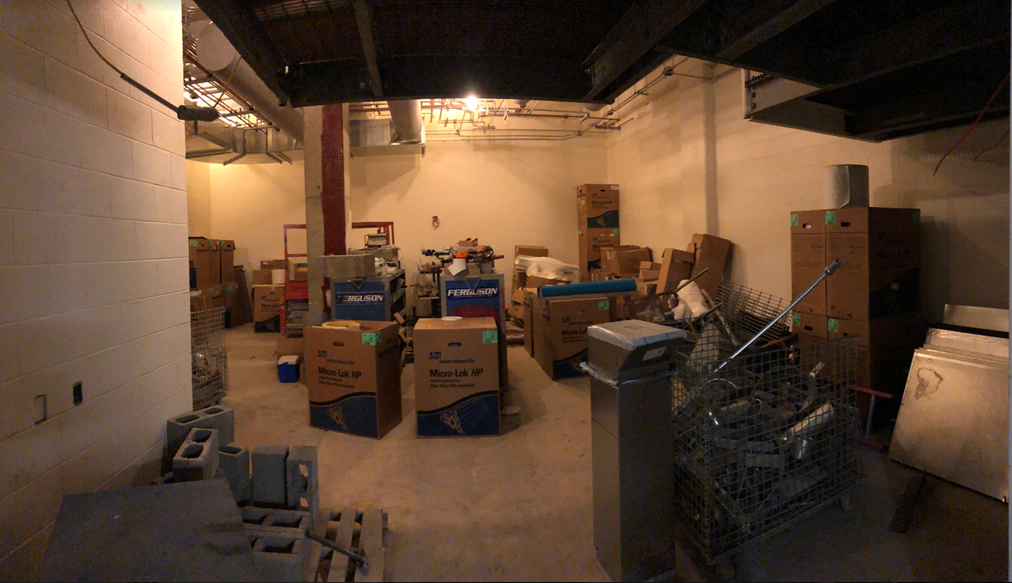
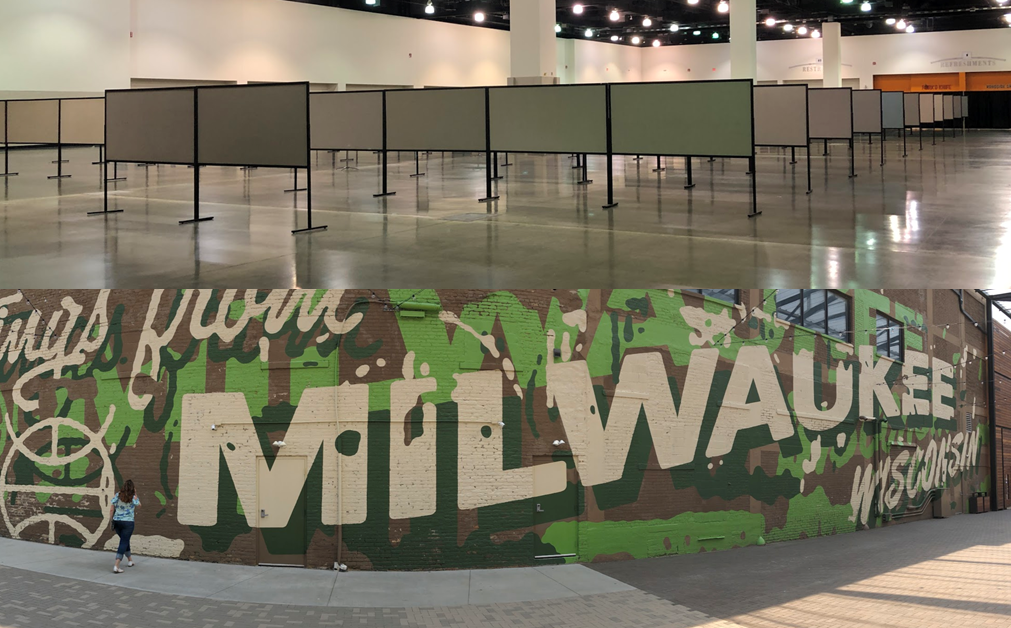
May 2019
We recently attended our first DAMOP conference in Milwaukee.
Here we presented our research plans using AlCl and CH molecules alongside our initial results using SrF molecules.
May 2019
Dan secures a prestigious CAREER Award from the National Science Foundation.
Learn more here.
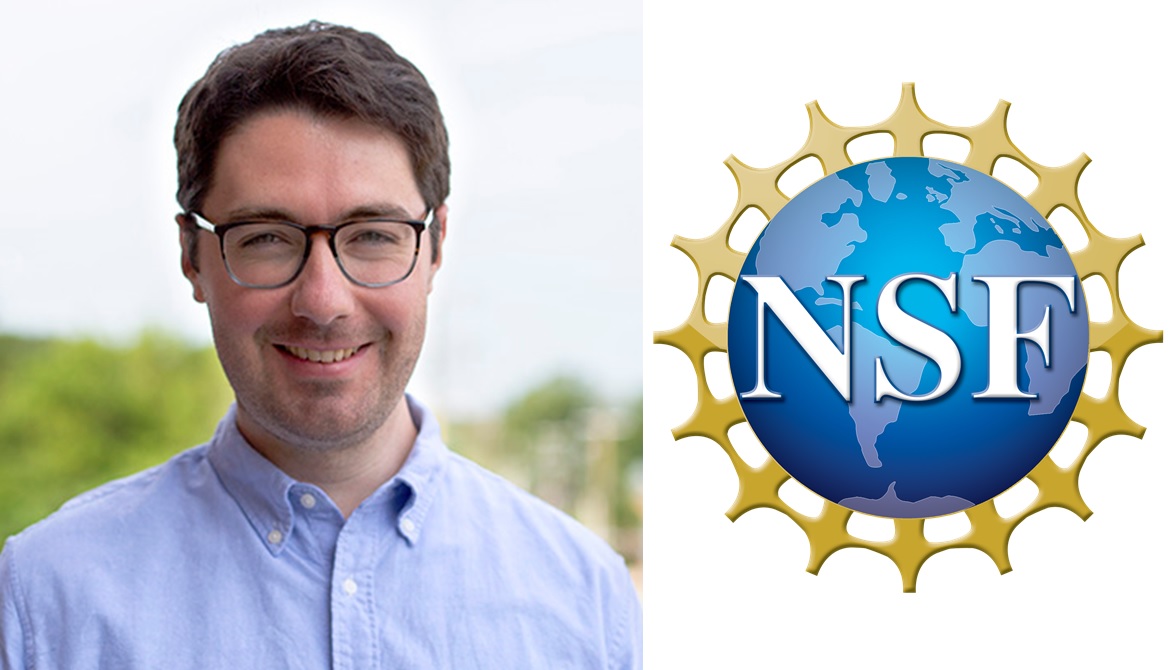
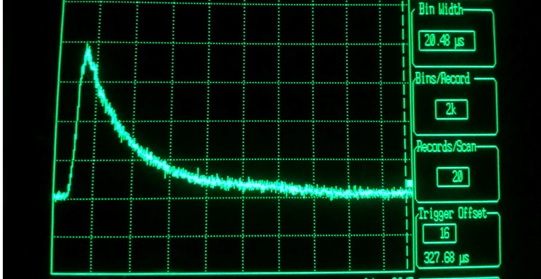
May 2019
First time-resolved laser-induced-fluorescence measurements made on our beam of SrF molecules. Each pulse of molecules has a duration of ~20 ms.
April 2019
Jamie wins an award at the Physics Department annual research poster exhibit – congratulations!
Jamie’s poster presented our new cryogenic source alongside absorption and fluorescence measurements on a beam of SrF molecules.
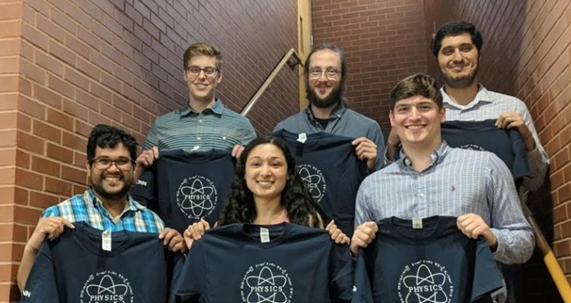
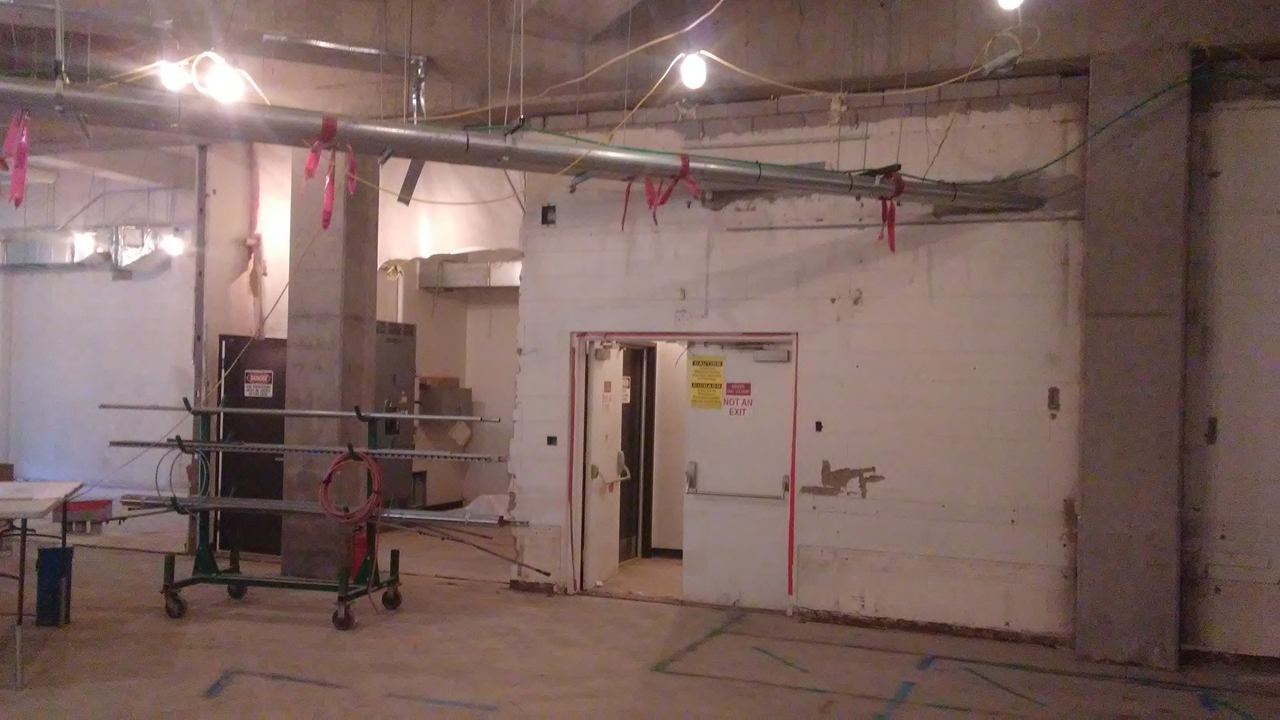
February 2019
Today we visited our future home in the new Department of Physics building at UConn. We expect to move into our new lab in about 6 months.
January 2019
A photomultiplier tube will soon be installed above our molecular beam for sensitive tests of optical cycling in molecules. This specific device detects photons from 185 to 850 nm.
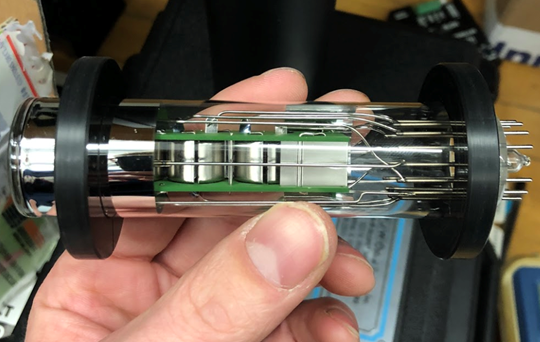
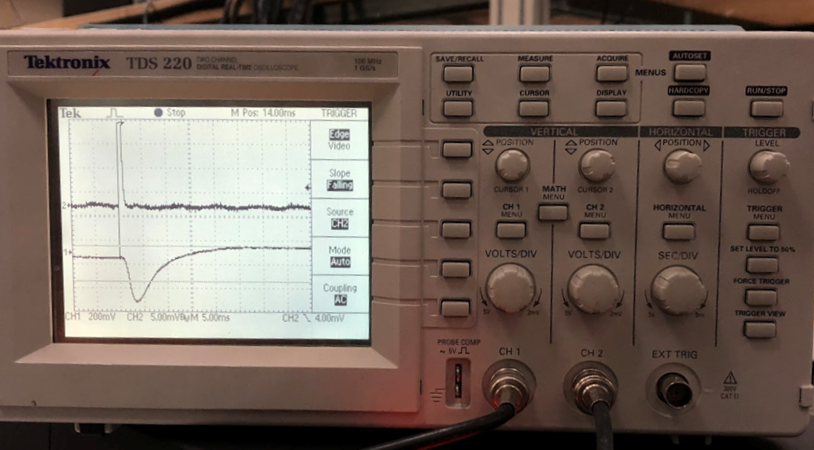
November 2018
Our cryogenic source is operational! We’ve detected our first beam of SrF molecules via absorption.
September 2018
The laser system and locking setup for our initial tests using strontium monofluoride (SrF) molecules is taking shape.
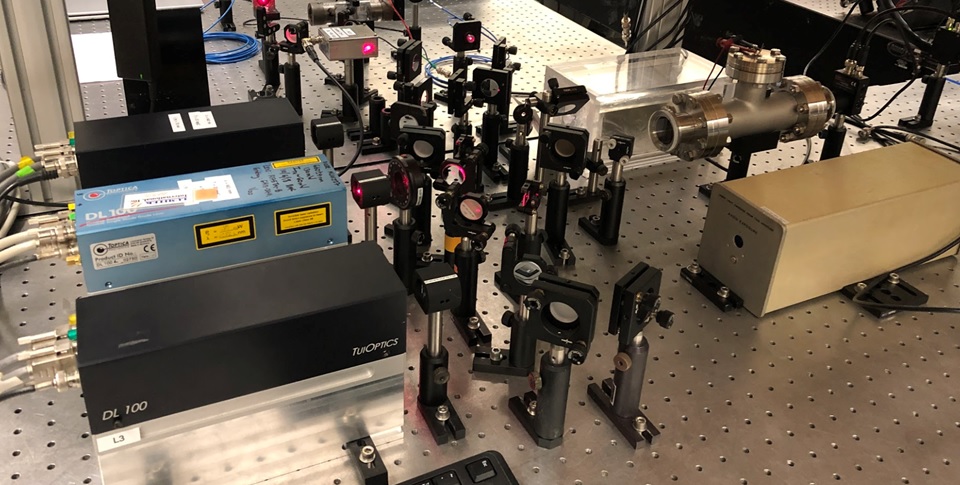
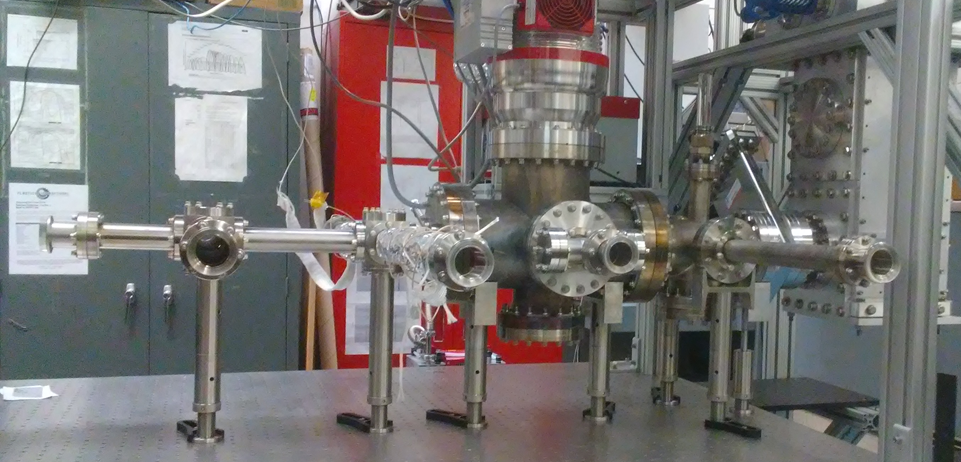
June 2018
Our first vacuum system is now assembled and pumping down. This setup will be used for spectroscopy and optical cycling experiments on molecular beams.
April 2018
Our pulse-tube refrigerator is insulated and working well! We can cool down to a minimum temperature of ≈ 2.2 K that’s stable to ± 5 mK.
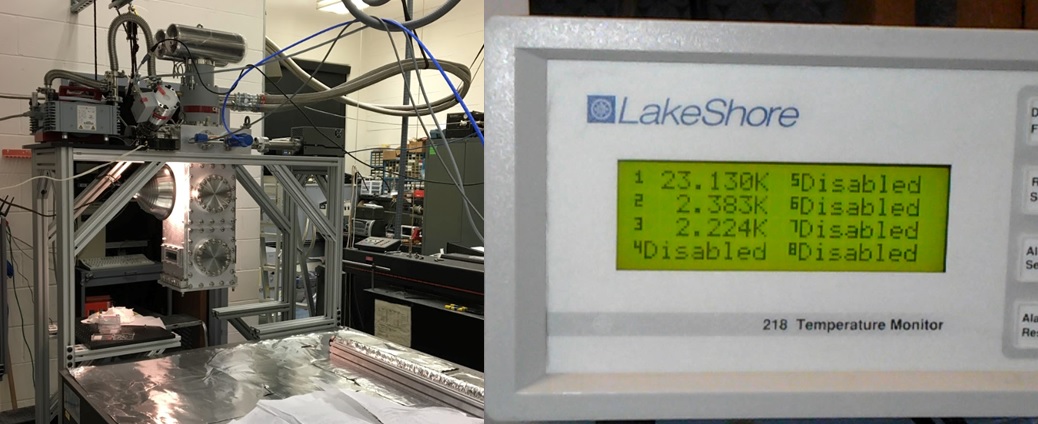
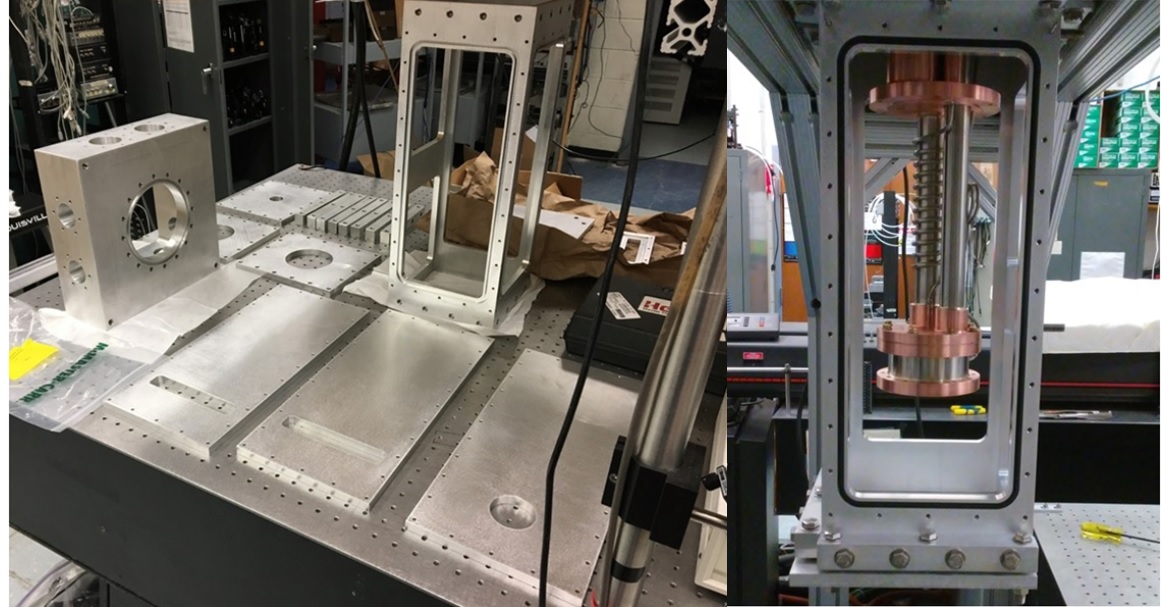
February 2018
Our first cryogenic source chamber is taking shape. We’ll be ready to test our pulse-tube refrigerator soon!
August 2017
The McCarron Group begins working at the University of Connecticut.
Welcome to Jamie and Andy, our first graduate students!

